Likes
- An affordable automotive icon.
- All the simplicity and enjoyment of the NA MX-5, but improved.
- SP (and SE) models are very special.
- Phenomenal support network and plenty of great examples on the used market.
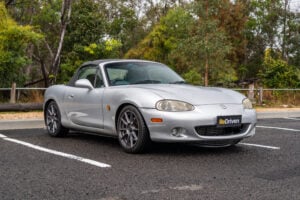

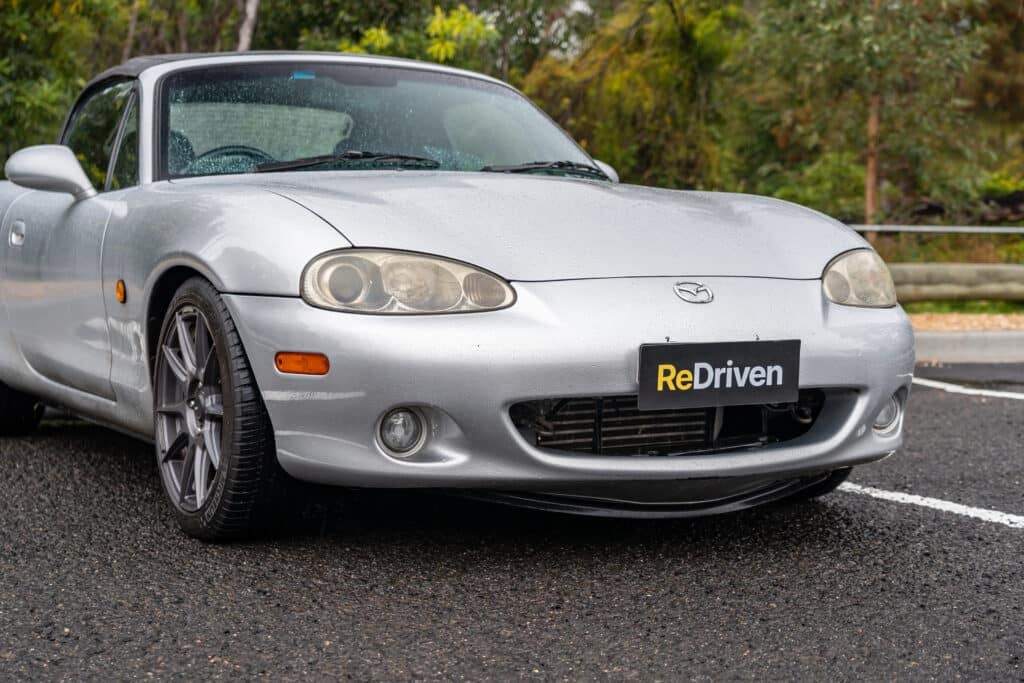
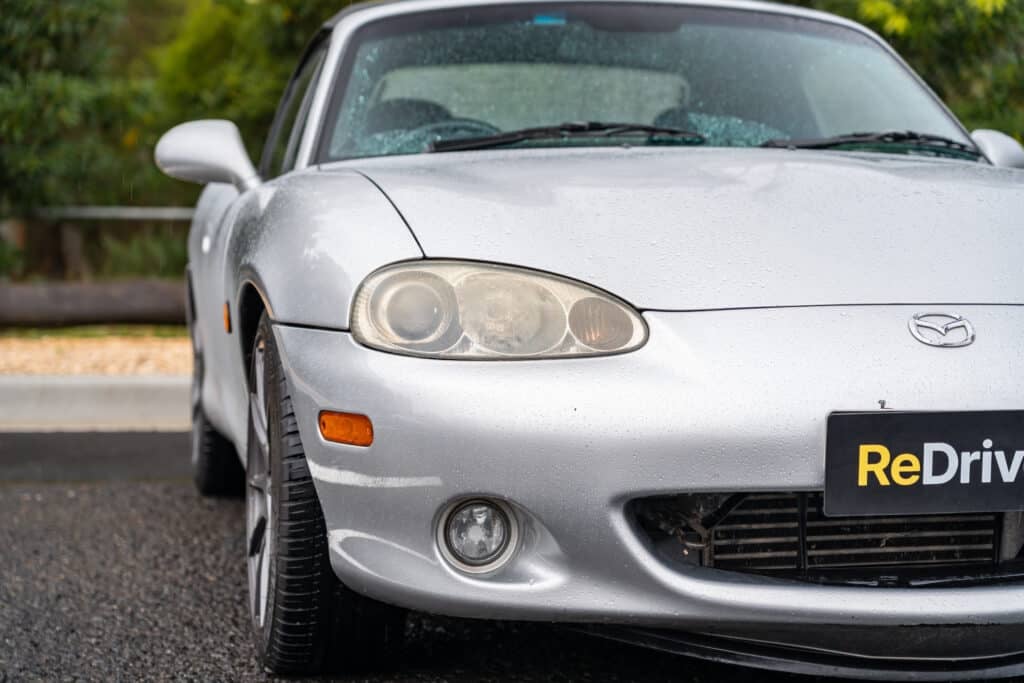
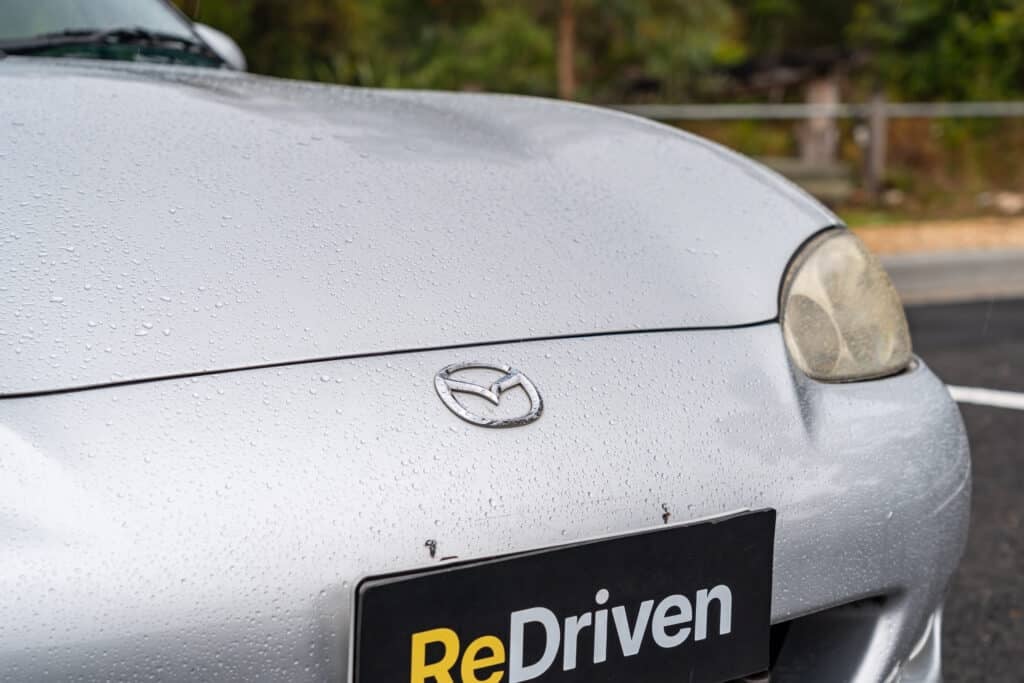
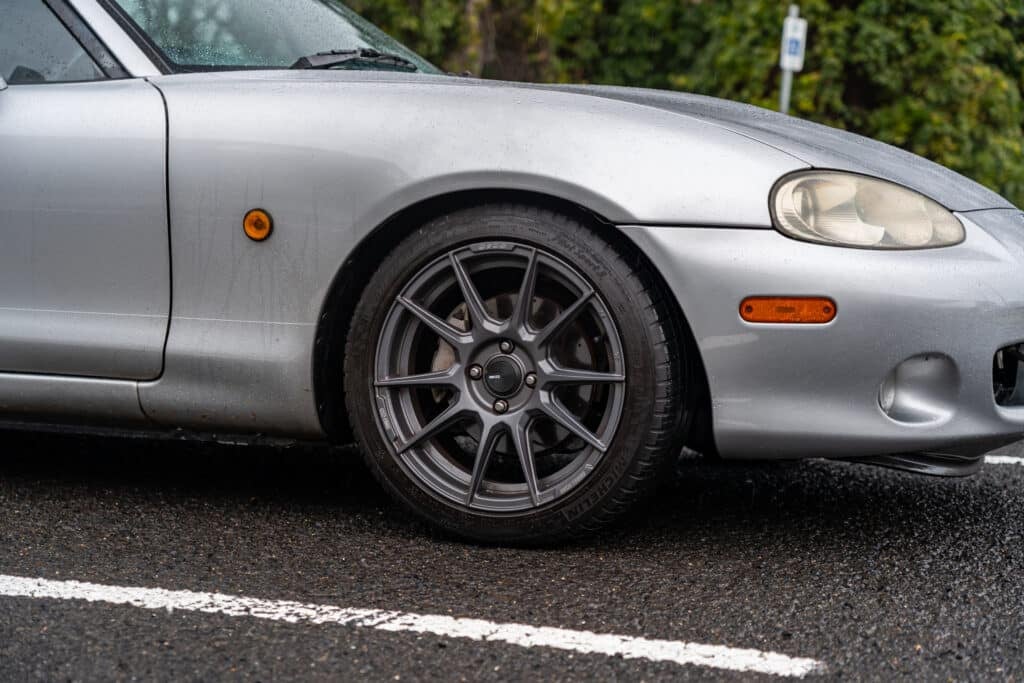
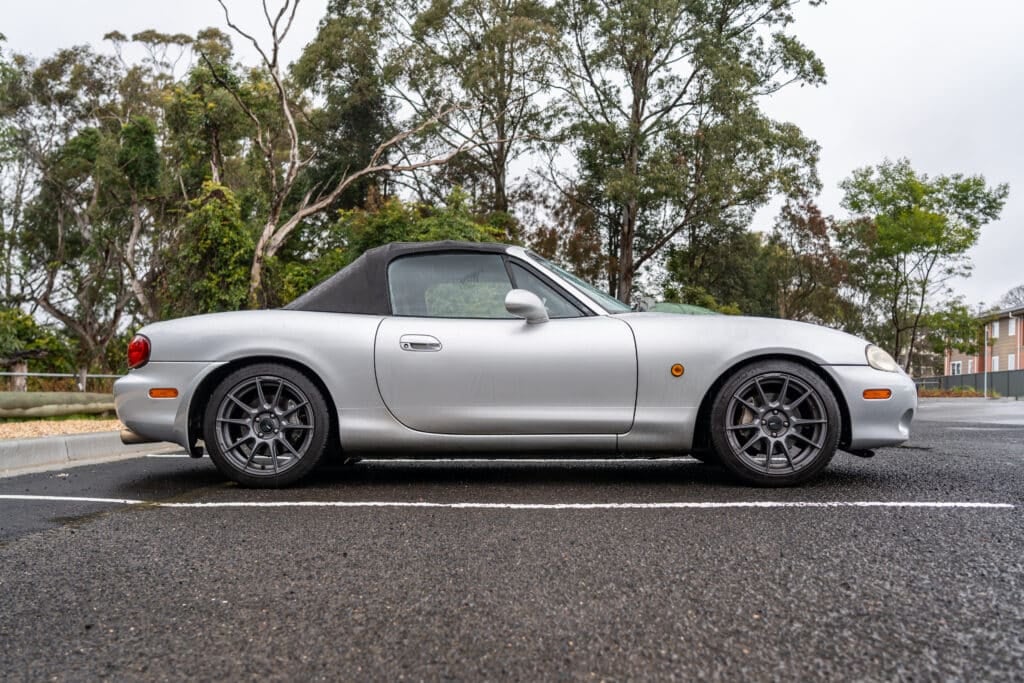
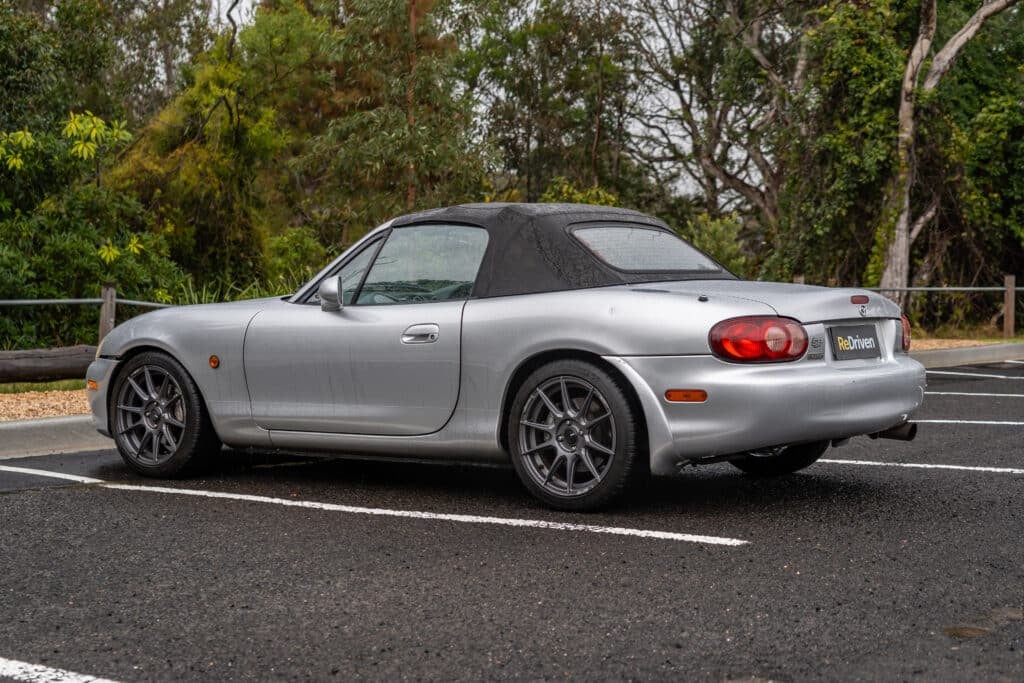
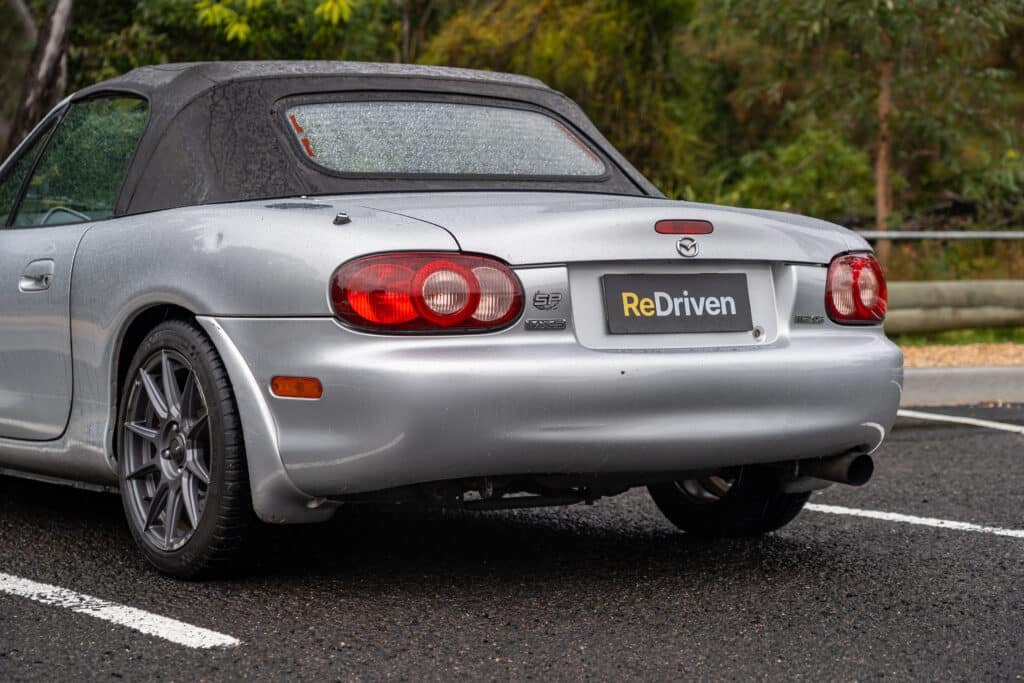
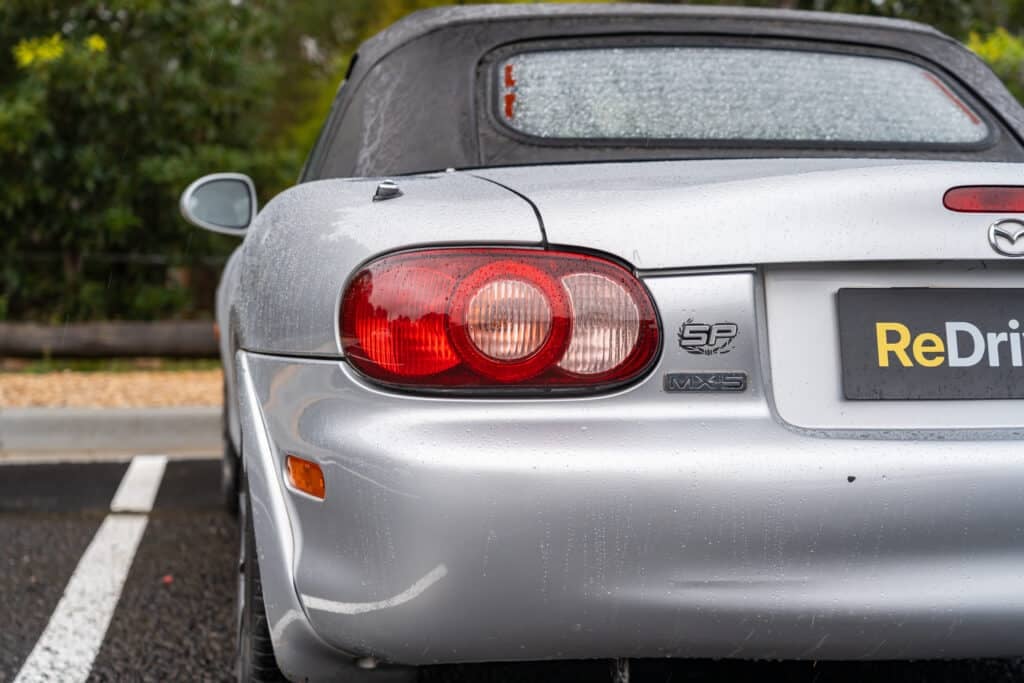
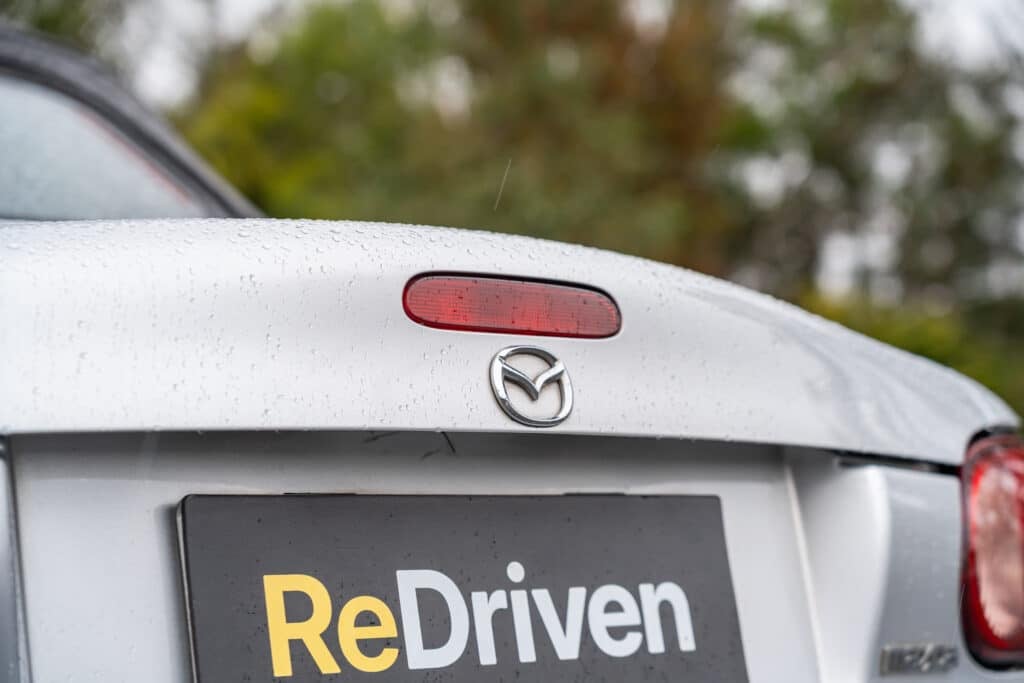
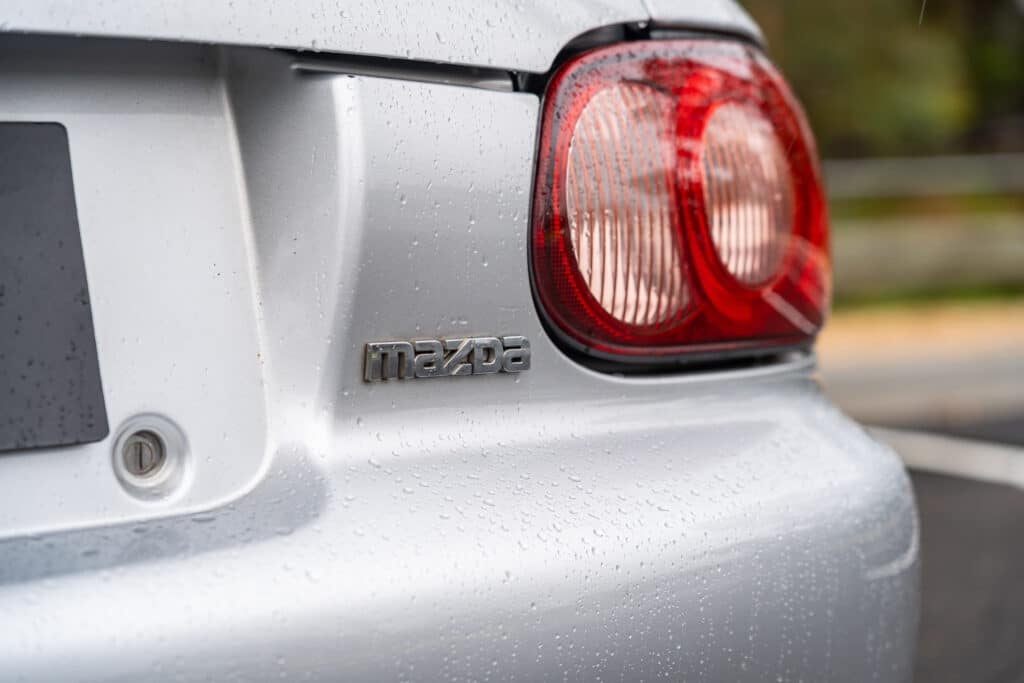
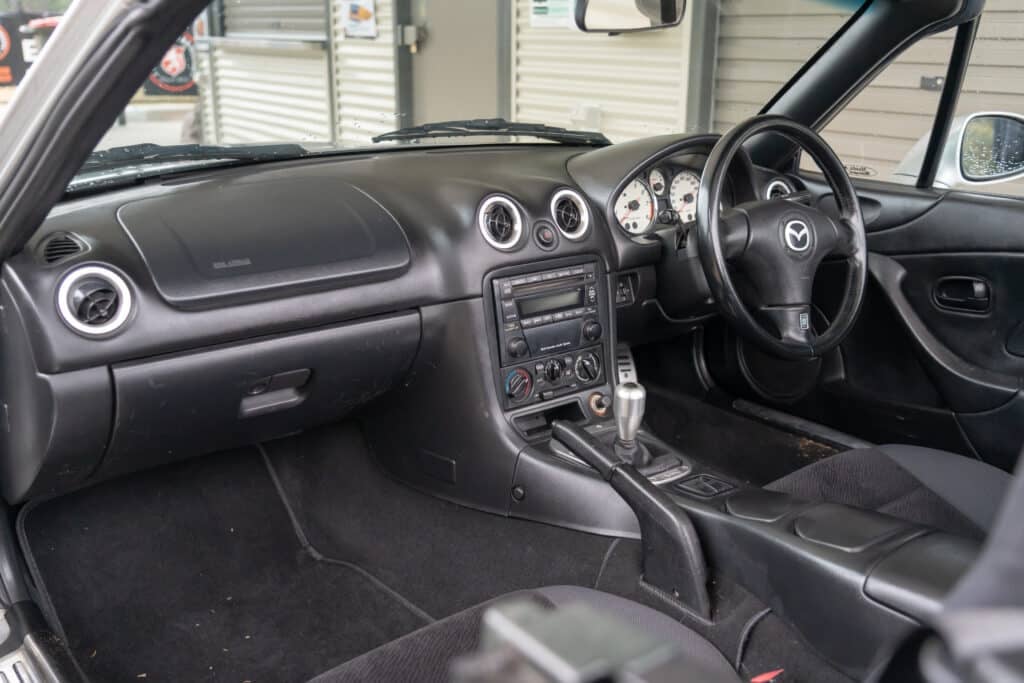
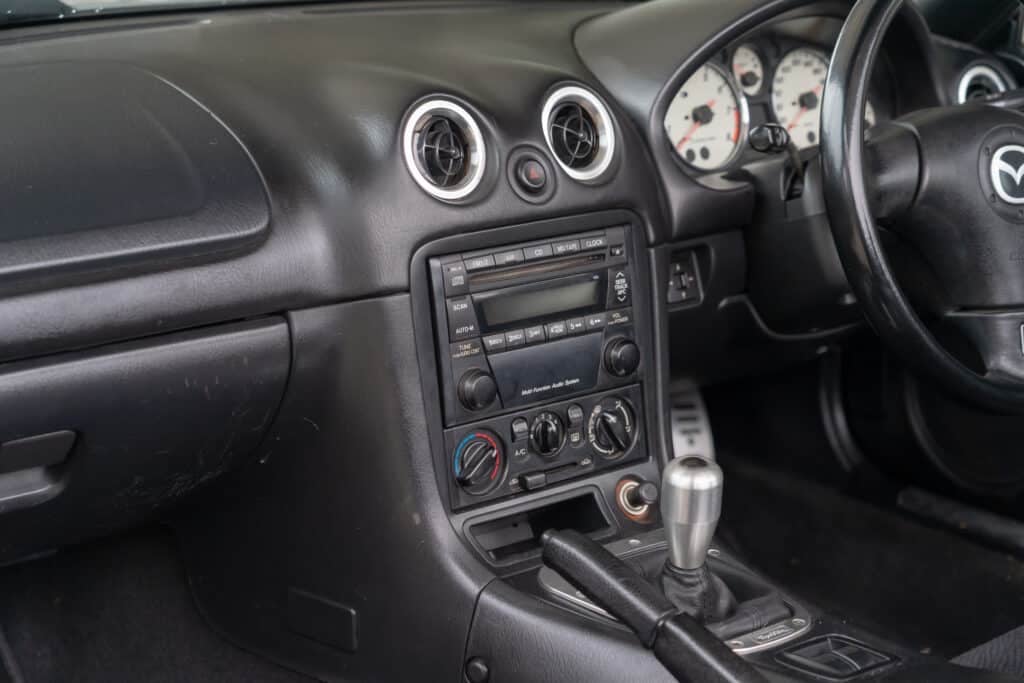
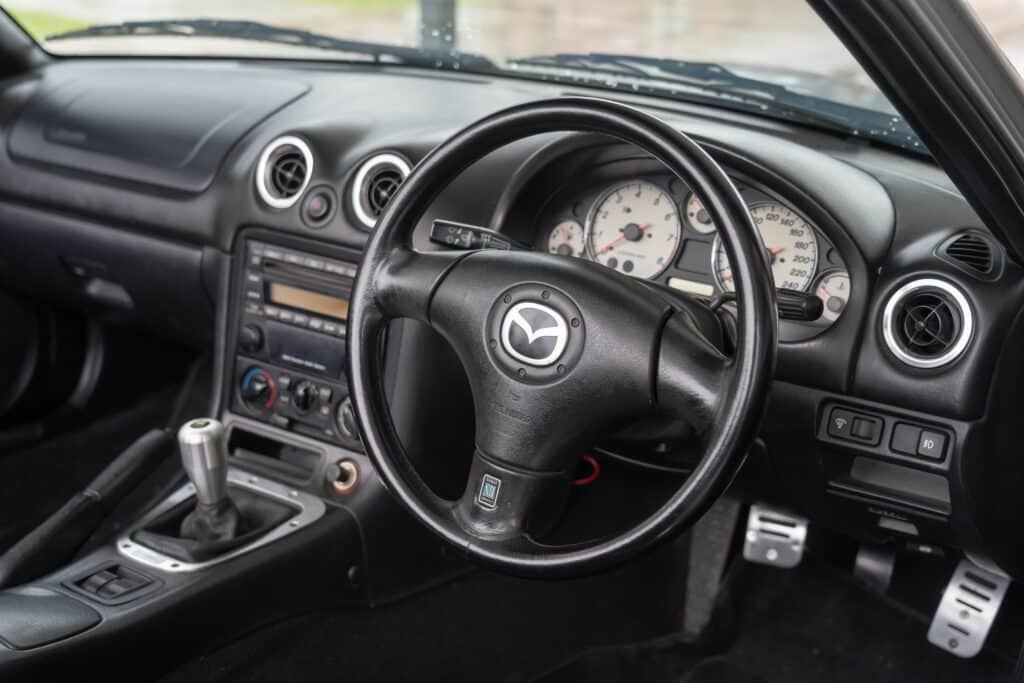

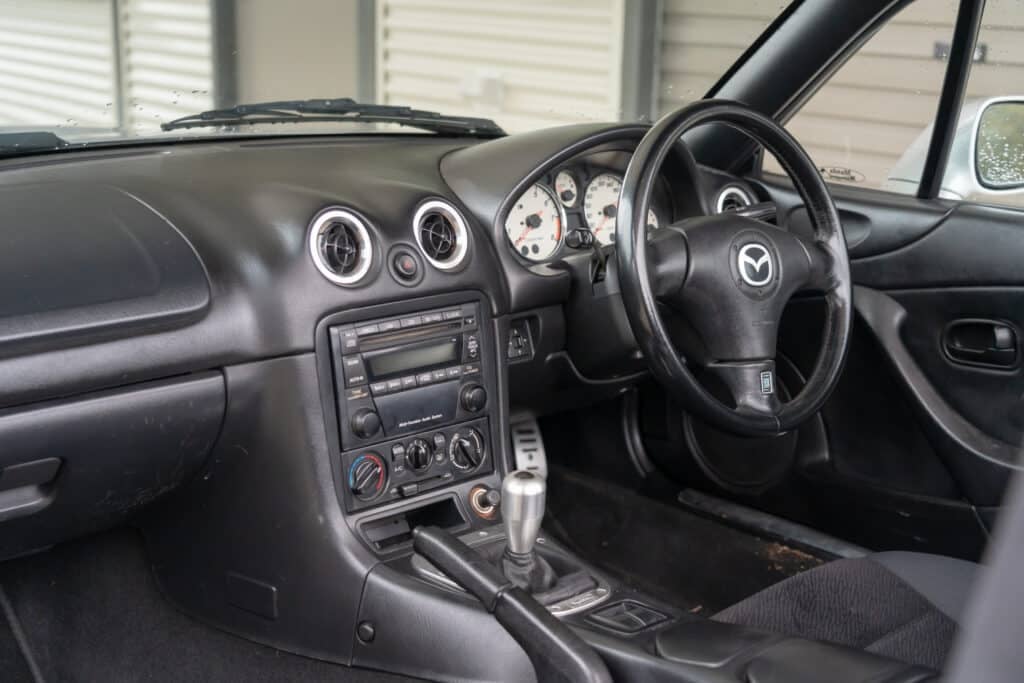
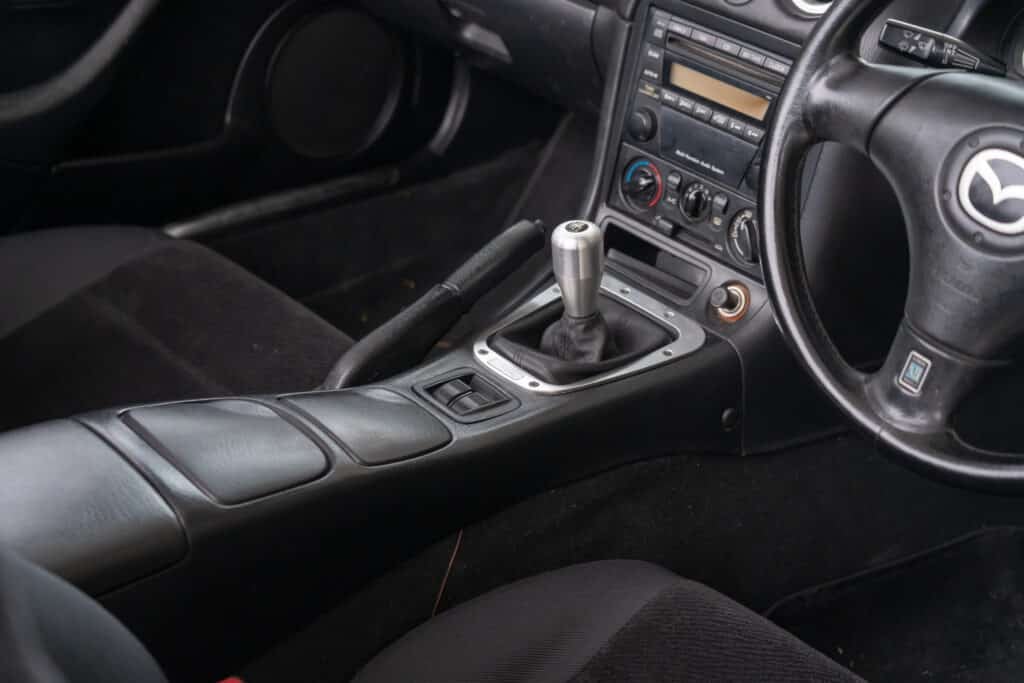
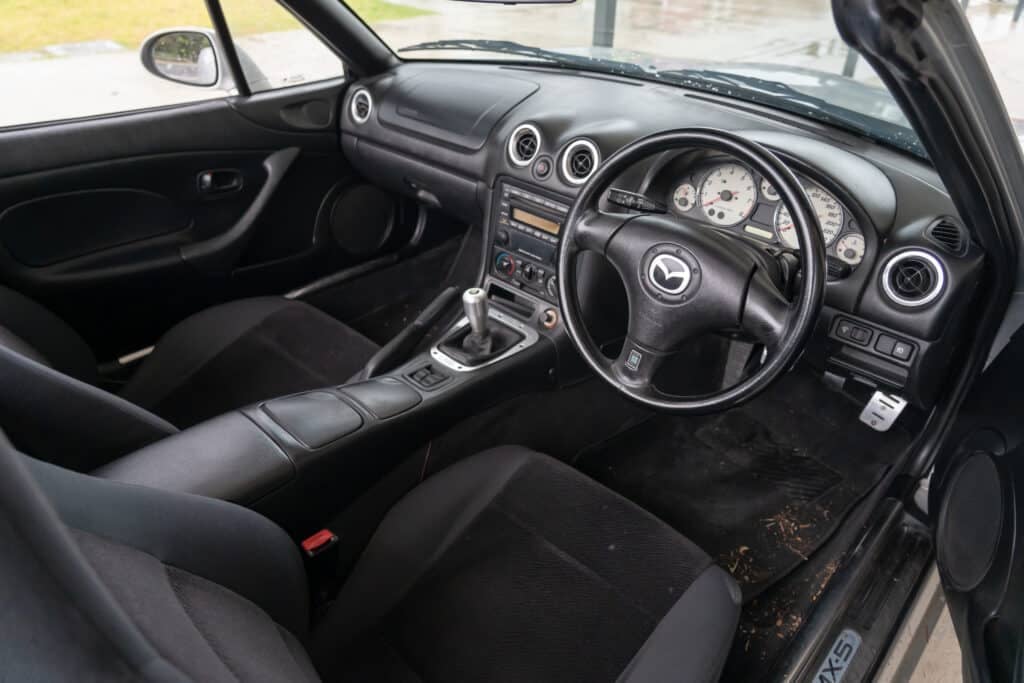
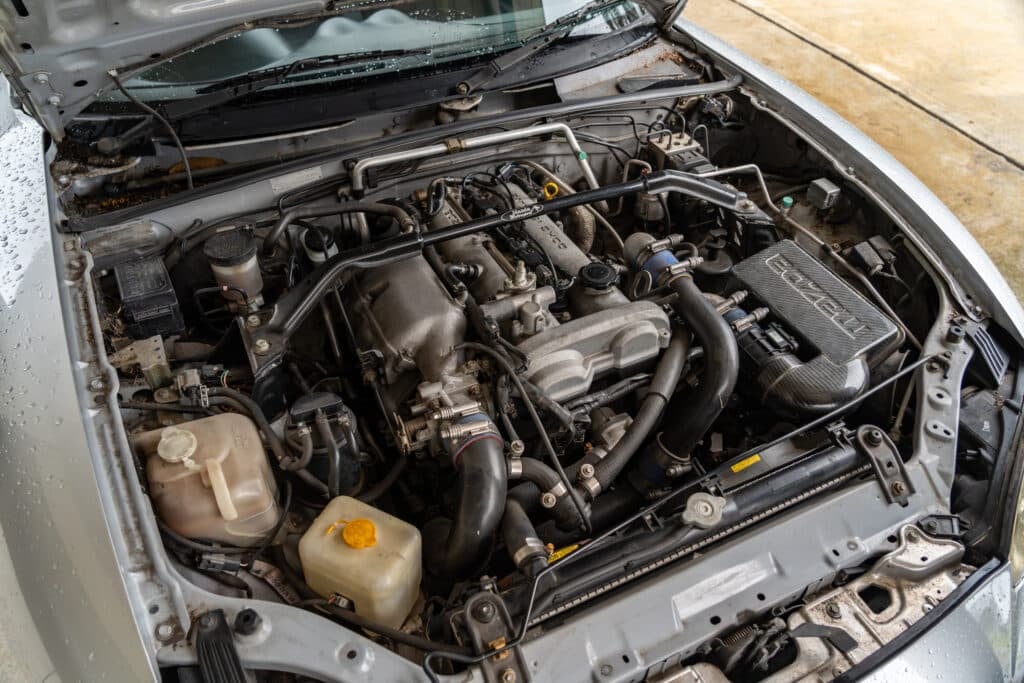
While it might look like just a face lifted NA at first glance, the second act in Mazda’s world-famous lightweight roadster saga, built from 1998 to 2005, the NB was far more than a reskin. Over its run in Australia, we had four distinct iterations, and while each had its tweaks and upgrades, the jump from Series 1 to Series 2 was easily the biggest transformation. The Series 1 (1998–2000) carried over much of the NA’s DNA, including the 1.8-litre BP-Z3 DOHC four-cylinder with 103 kW (138 hp) and 181 Nm (133 lb.ft) driving the rear wheels through either a 5-speed manual or optional 4-speed auto. No VVT here, just simple, honest rev-happy performance wrapped in a slightly more modern body with fixed headlights replacing the NA’s pop-ups.
Then came the Series 2 (2000–2002), and this was where things got properly interesting. The 1.8-litre gained Mazda’s BP-VE VVT system, which bumped power to 113 kW (151 hp) while torque remained at 181 Nm (133 lb.ft), but the delivery became smoother and more responsive. The chassis and suspension were fine-tuned, the interior updated, and overall refinement lifted. And in Australia, the Series 2 brought something very special indeed, the MX-5 SP. Built by Mazda Australia’s special project department (and apparently with the help of race engineering boffins Prodrive), the SP packed a turbocharged BP-4W engine good for a thumping 157 kW (210 hp) and 289 Nm (213 lb.ft). Only 100 were made, all for our market, making them rare, brutally fast for their day, and now a seriously collectible piece of Aussie MX-5 history.
The Series 3 (2002–2004) brought a facelift with sharper bumpers, new lights (including projector headlights), and subtle trim changes. Mechanically, the naturally aspirated cars carried over the Series 2’s BP-VE engine unchanged at 113 kW (151 hp) and 181 Nm (133 lb.ft). But the real headline here was the arrival of the MX-5 SE, a factory turbo model with 121 kW (162 hp) and 206 Nm (152 lb.ft), paired exclusively with a 6-speed manual. Internationally, the SE was essentially our local version of the Mazdaspeed MX-5/Miata, but the Aussie spec cars had unique wheels, colours, and some market-specific tuning. While not as extreme (or rare) as the SP, the SE is still a brisk, entertaining, and now sought-after NB variant.
Finally, the Series 4 (2004–2005) marked the NB’s last hurrah. Mechanically, the naturally aspirated models remained the same at 113 kW (151 hp) and 181 Nm (133 lb.ft), but Mazda added special editions like the Heritage and final-run SE turbo models. The Heritage edition was a nod to the NA’s style, with unique trim, badging, and colours, while the SE carried on with its 6-speed manual and factory turbo power. Equipment and trim levels varied over the years, from base-spec cloth-trimmed cars with steel wheels to leather-upholstered, Bose-audio, BBS-alloy-equipped limited editions. Across all iterations, Mazda kept the MX-5’s essence, light weight, rear-wheel drive, sharp steering, and a roof you could drop in seconds.
In Mazda’s Australian range of the time, the MX-5 sat apart from the family-friendly sedans and hatches, essentially as the brand’s affordable sports car flagship. In the broader Aussie market, it had no direct rival that matched its blend of reliability, affordability, and pure driving joy, the Toyota MR2 Spyder came close in spirit, but lacked the MX-5’s polish and everyday usability. Over the years, the NB has cemented itself as an icon not because it’s the fastest thing on the road, but because it delivers a tactile, connected driving experience that’s increasingly rare today.
That said, a word of warning for used buyers, these cars are now 20+ years old, and while many have been cherished, plenty have been thrashed, neglected, or “modified” by over-enthusiastic but under-skilled owners. Poor maintenance, track abuse, or bargain-basement aftermarket parts can all turn what should be a joyous little roadster into a money pit. A professional pre-purchase inspection is non-negotiable, and a thorough read through our “what goes wrong” section below is essential. Treat a good one right, though, and an NB MX-5 remains one of the most affordable ways to own a piece of true sports car heritage.
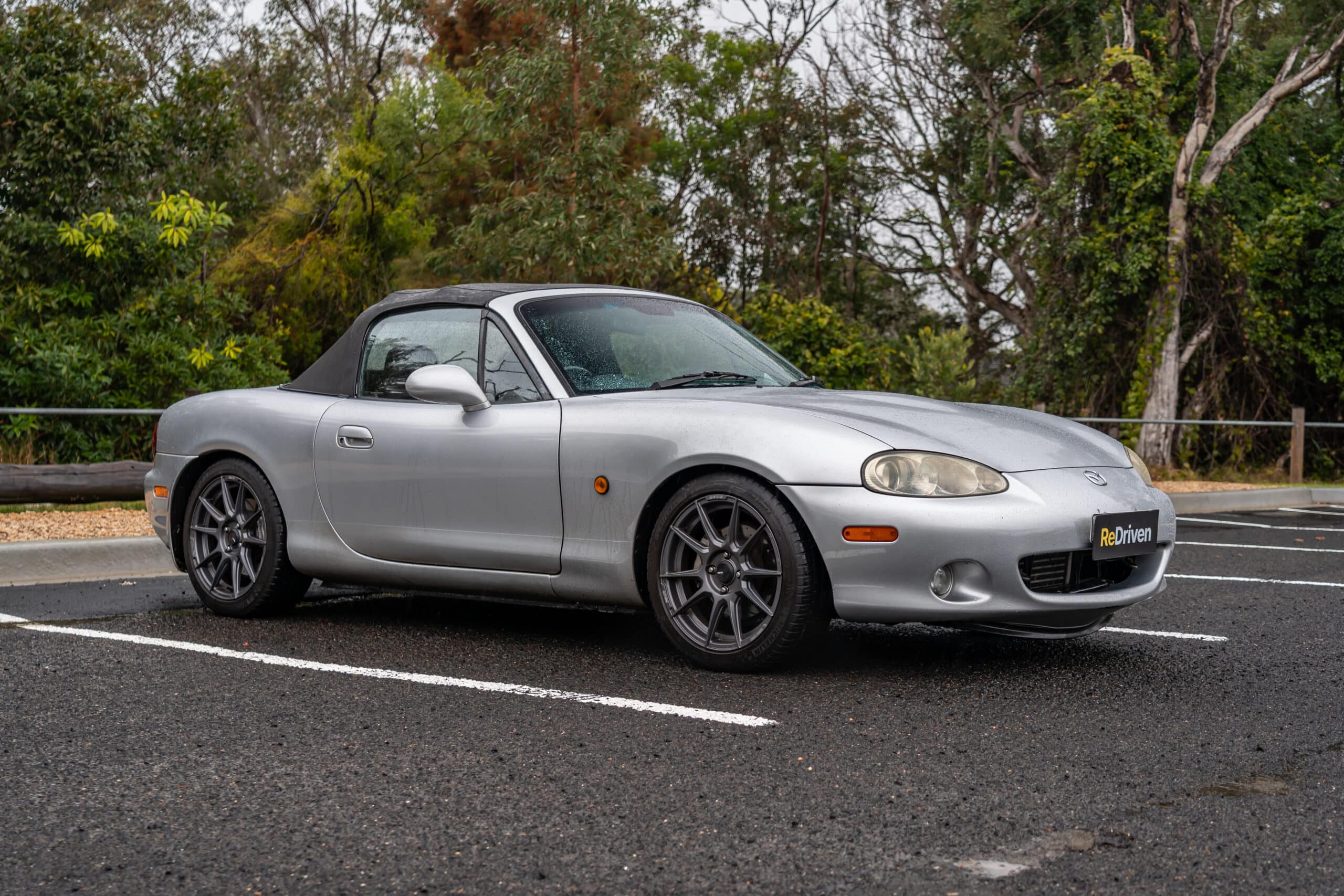
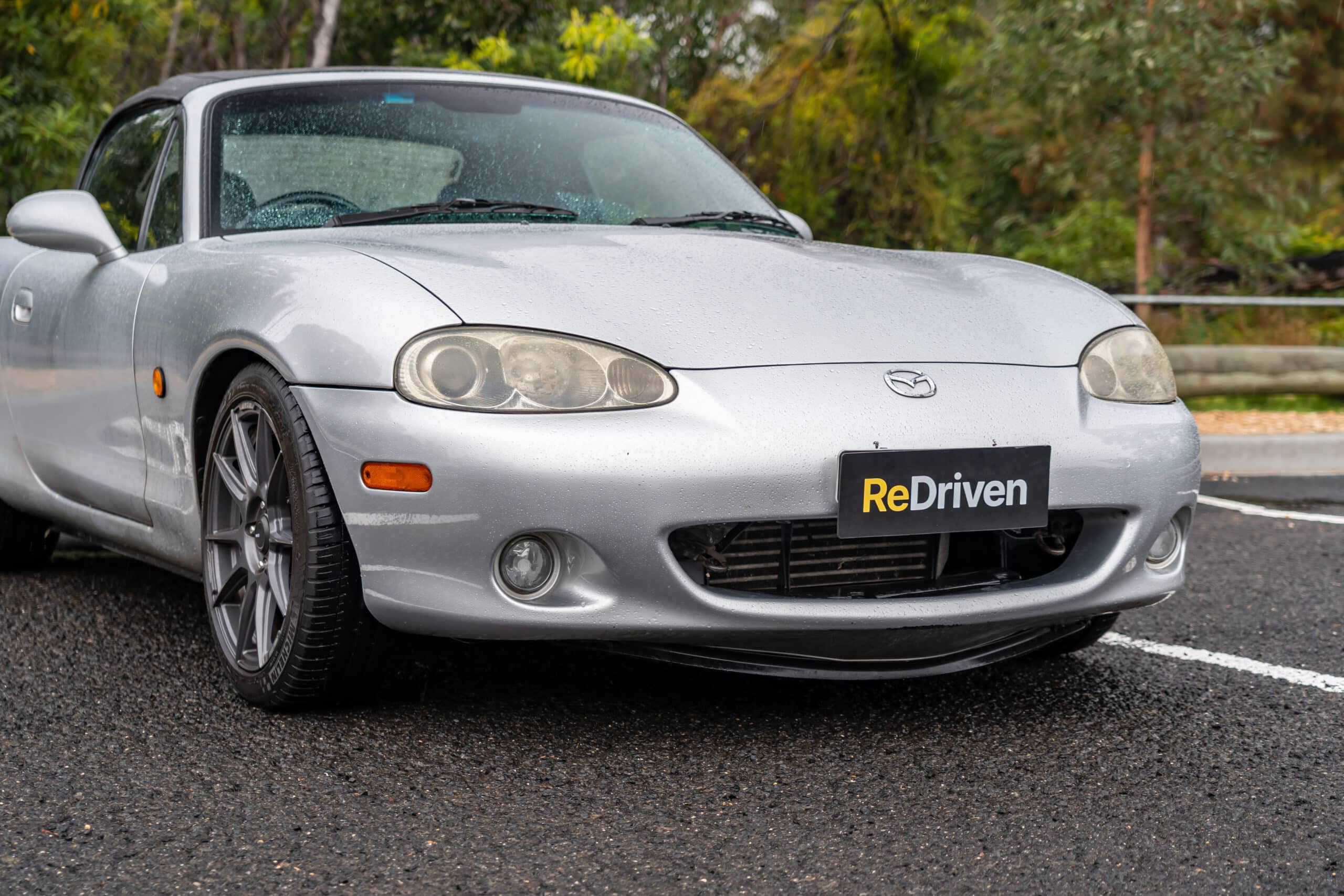
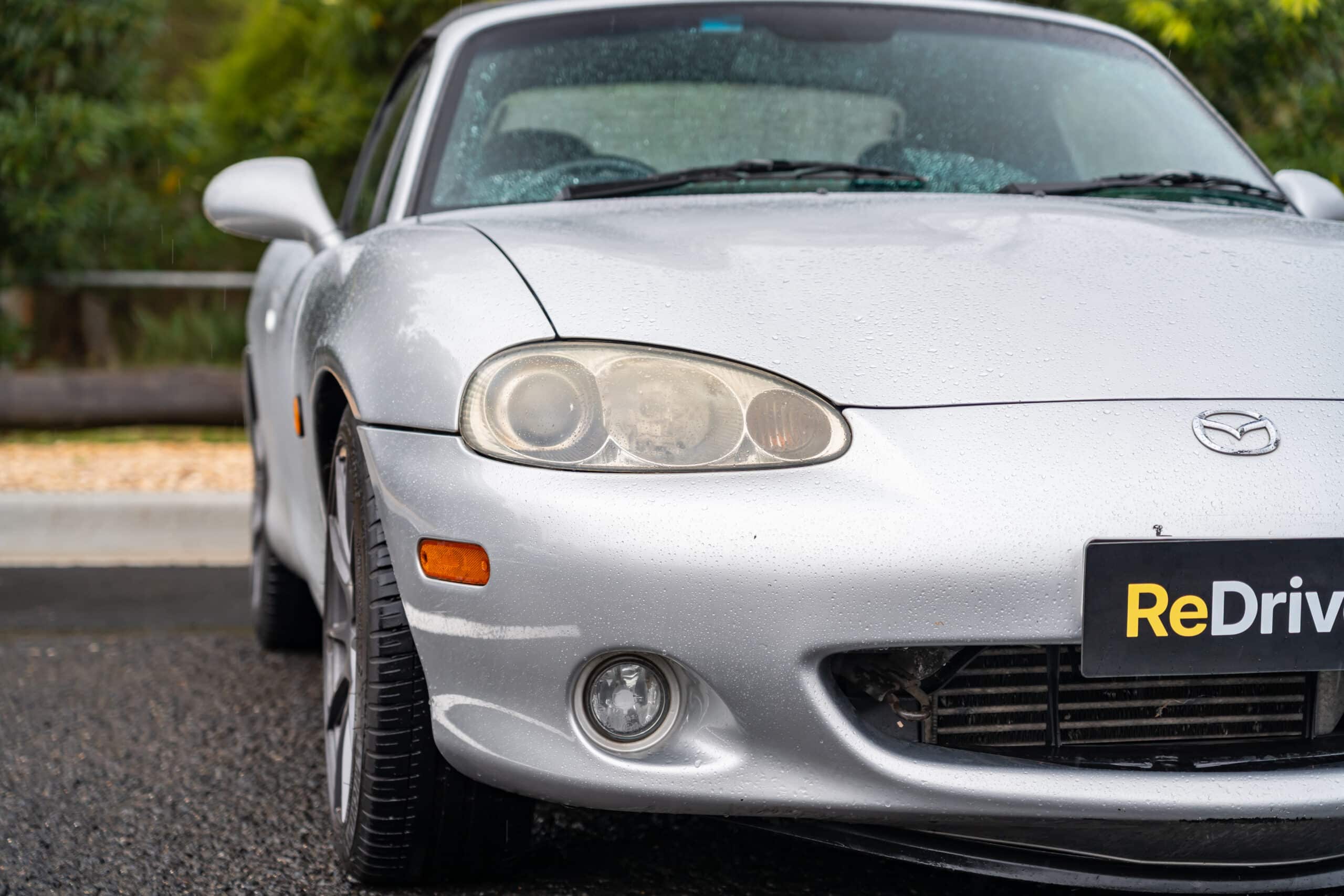
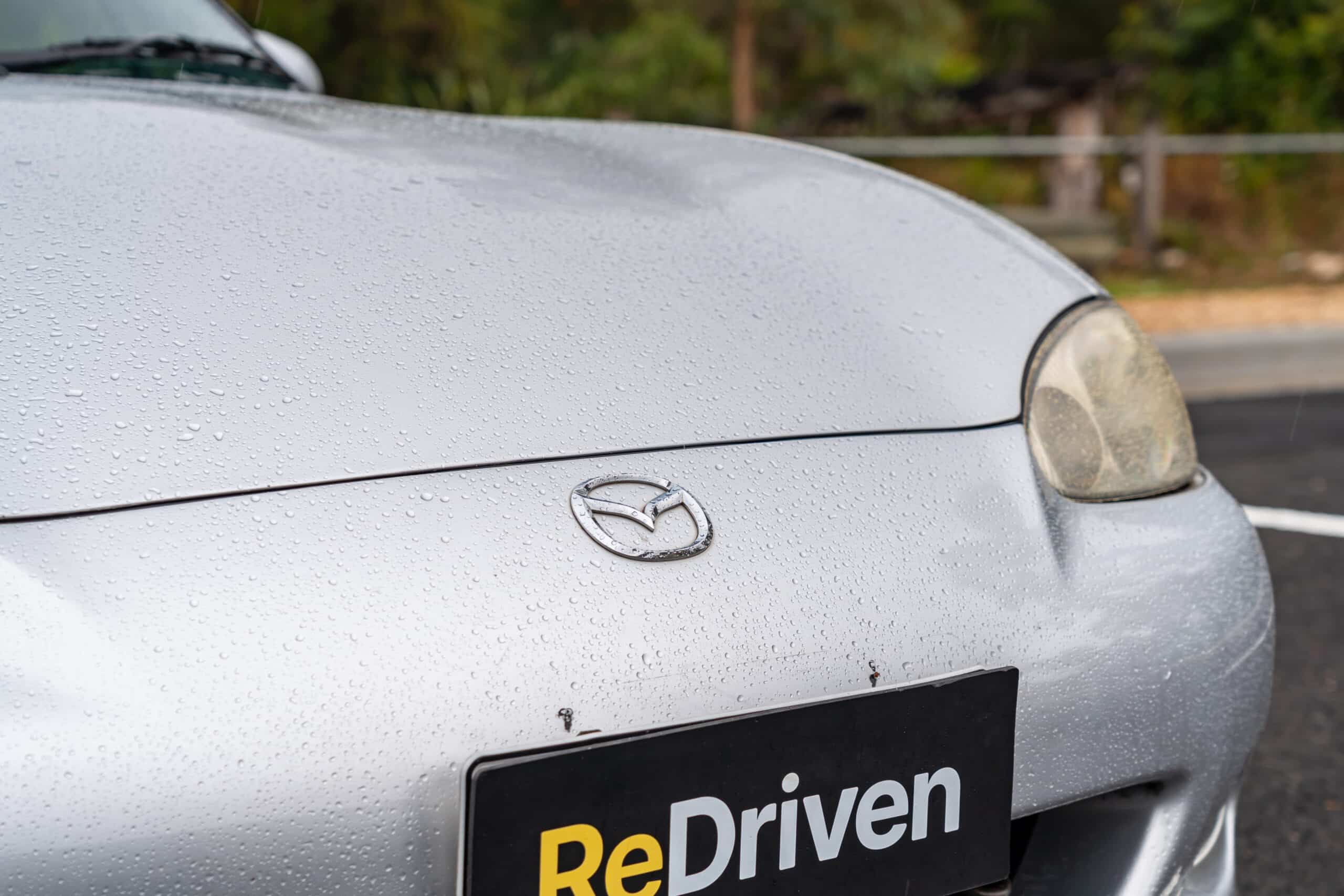
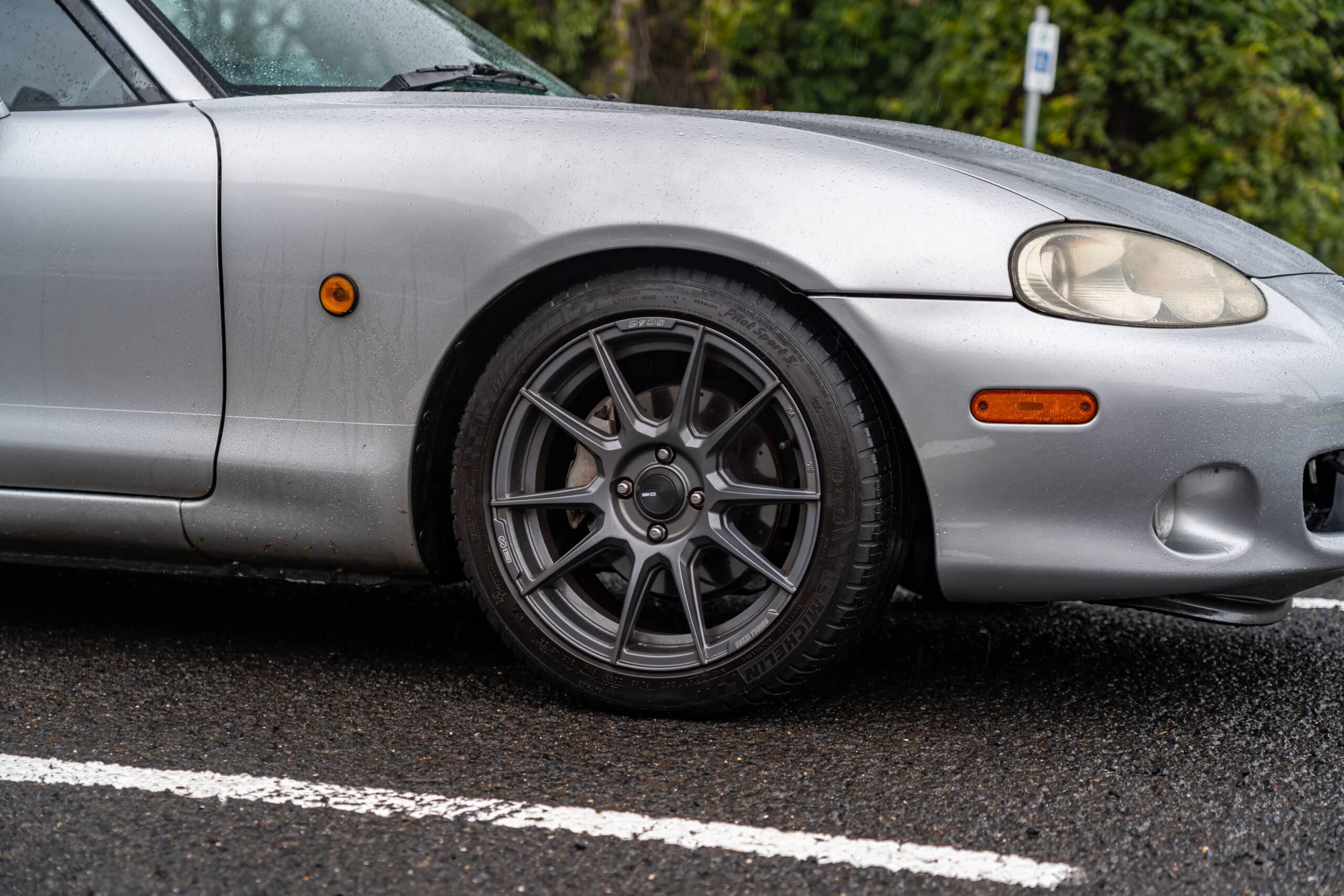
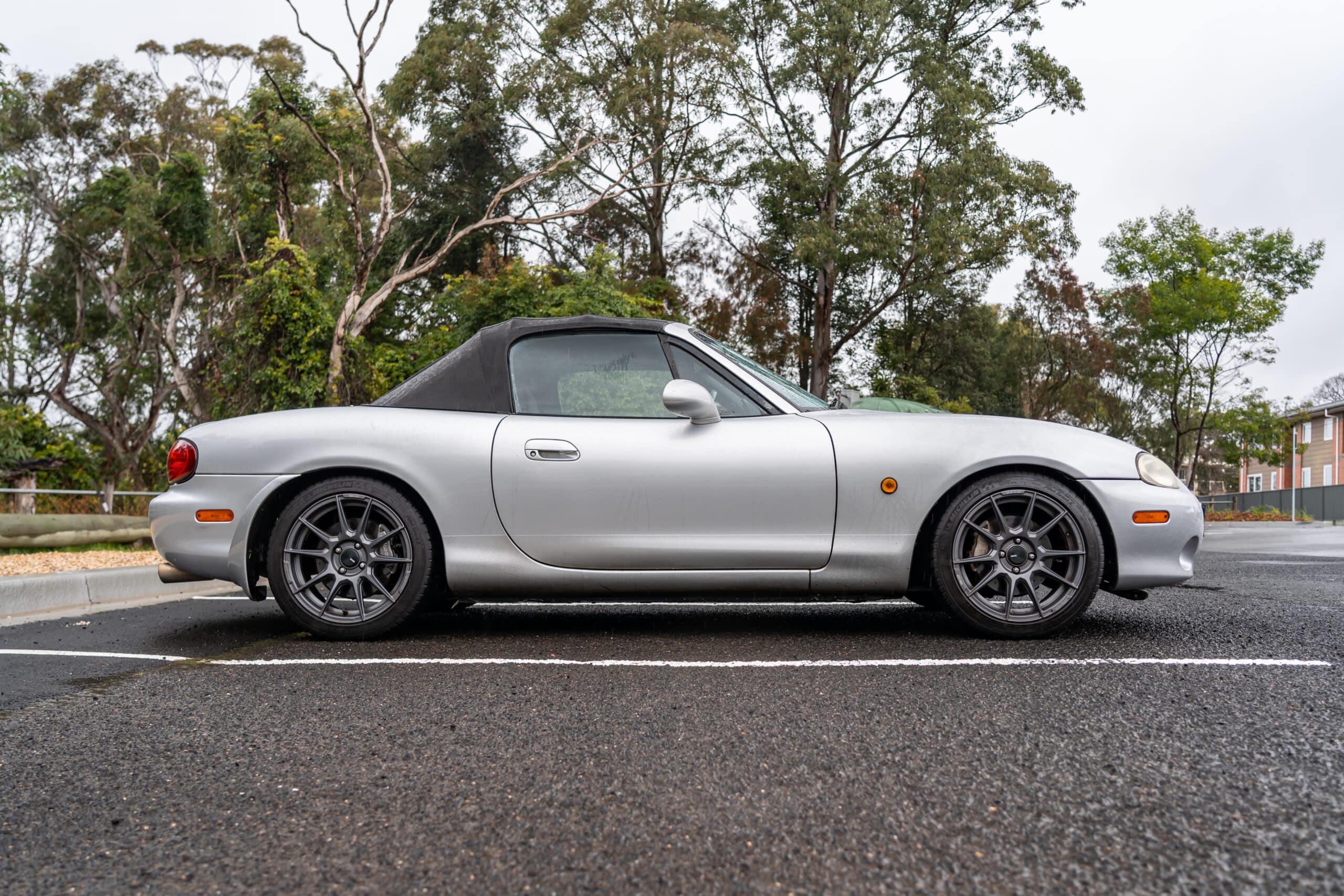
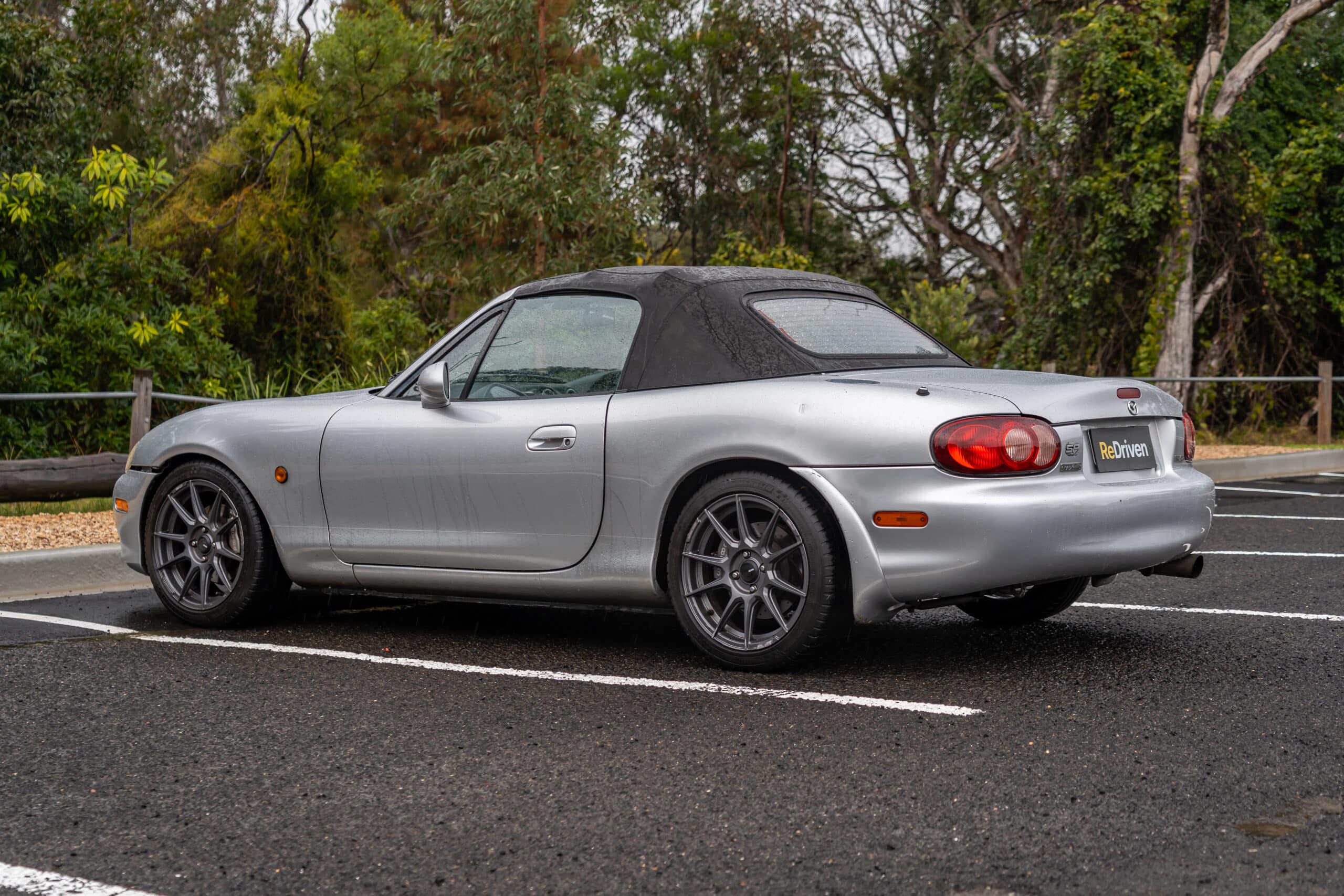
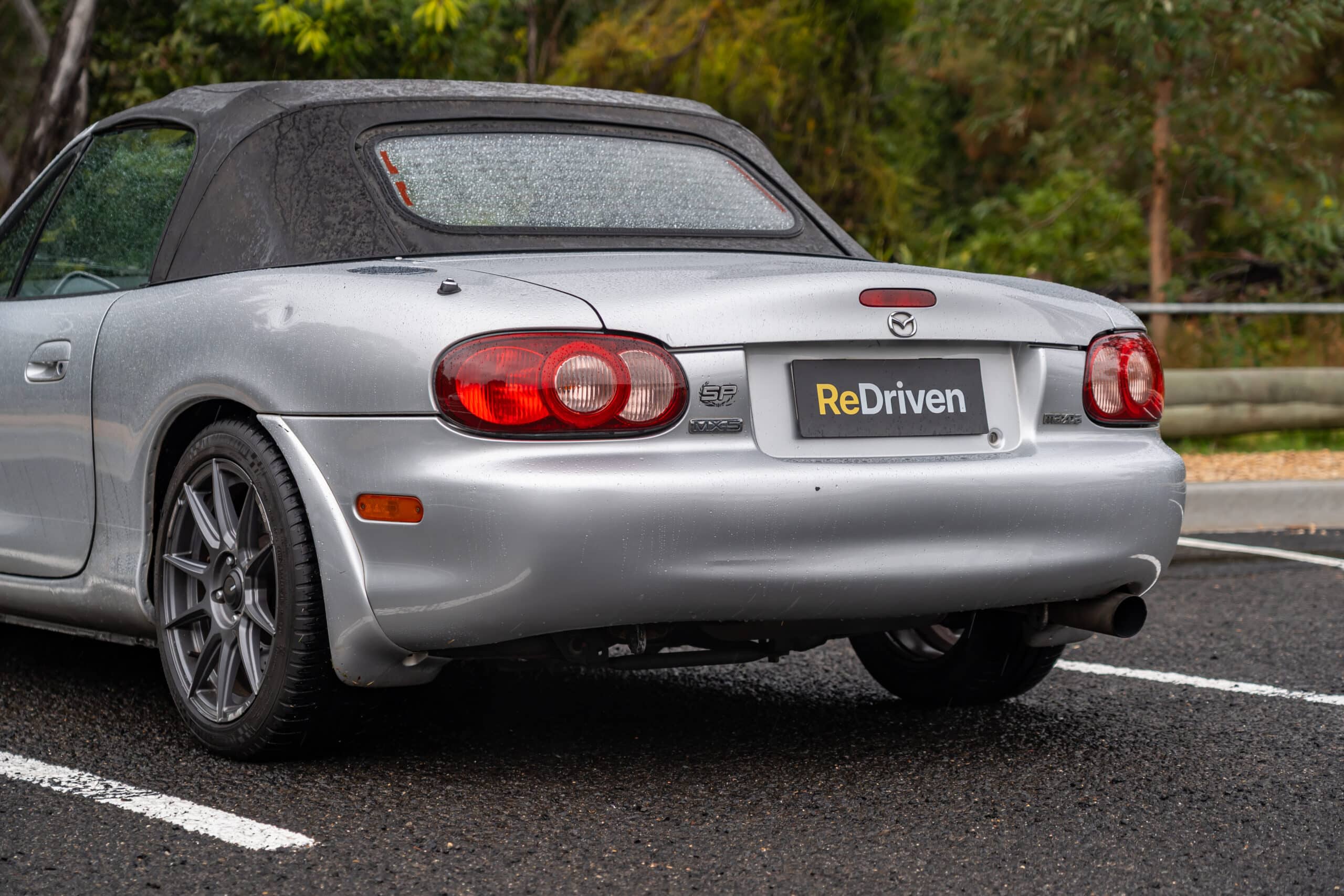
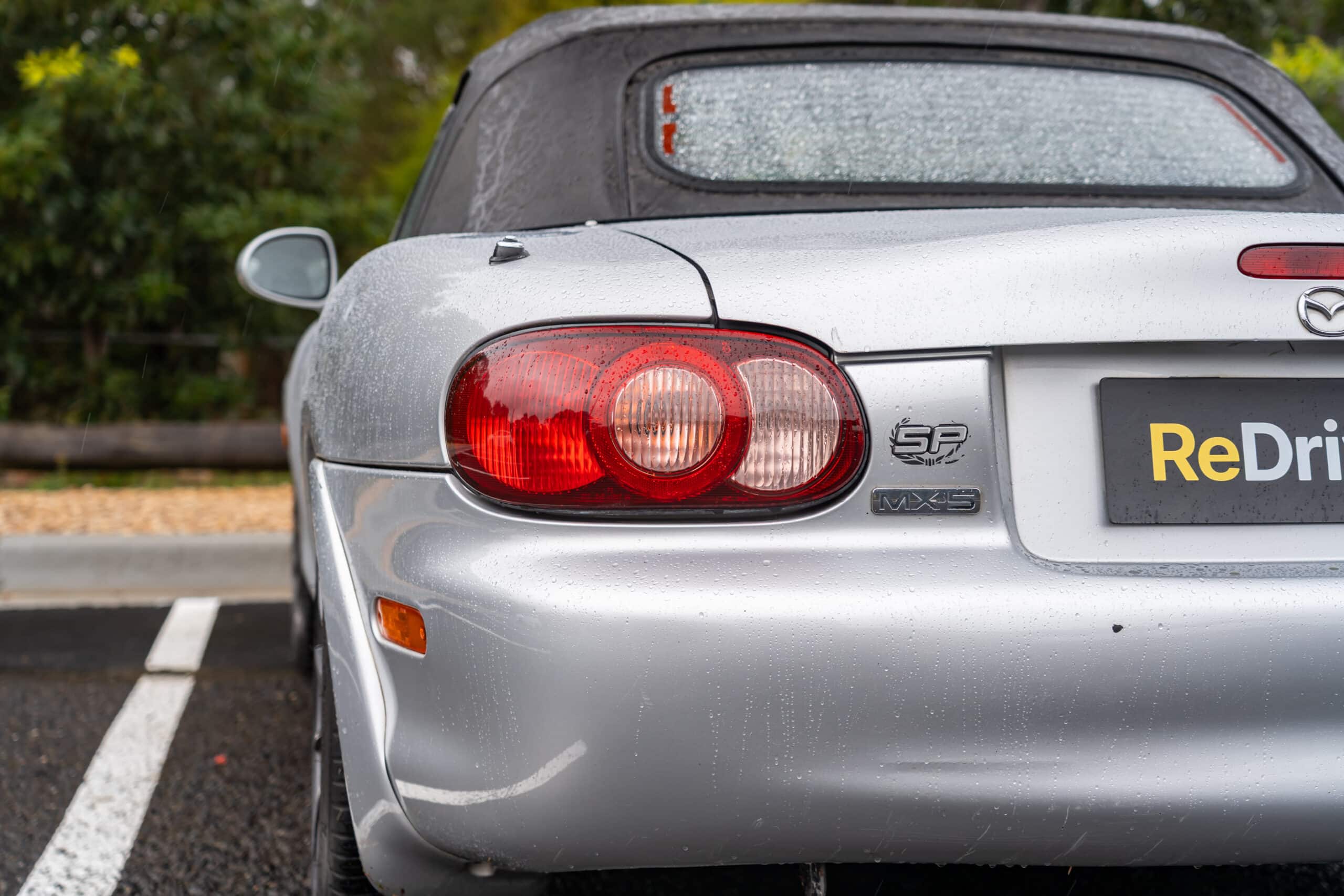
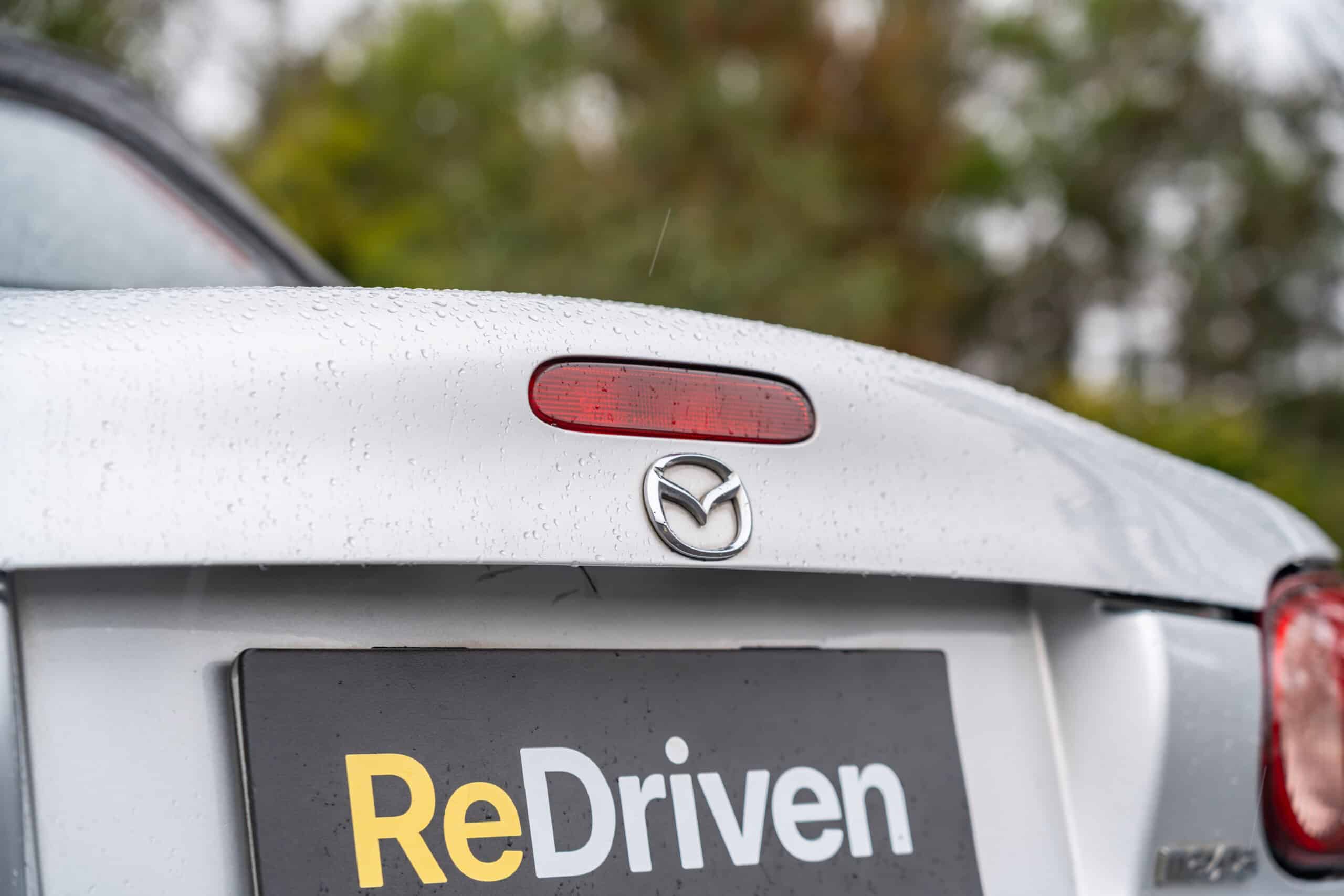
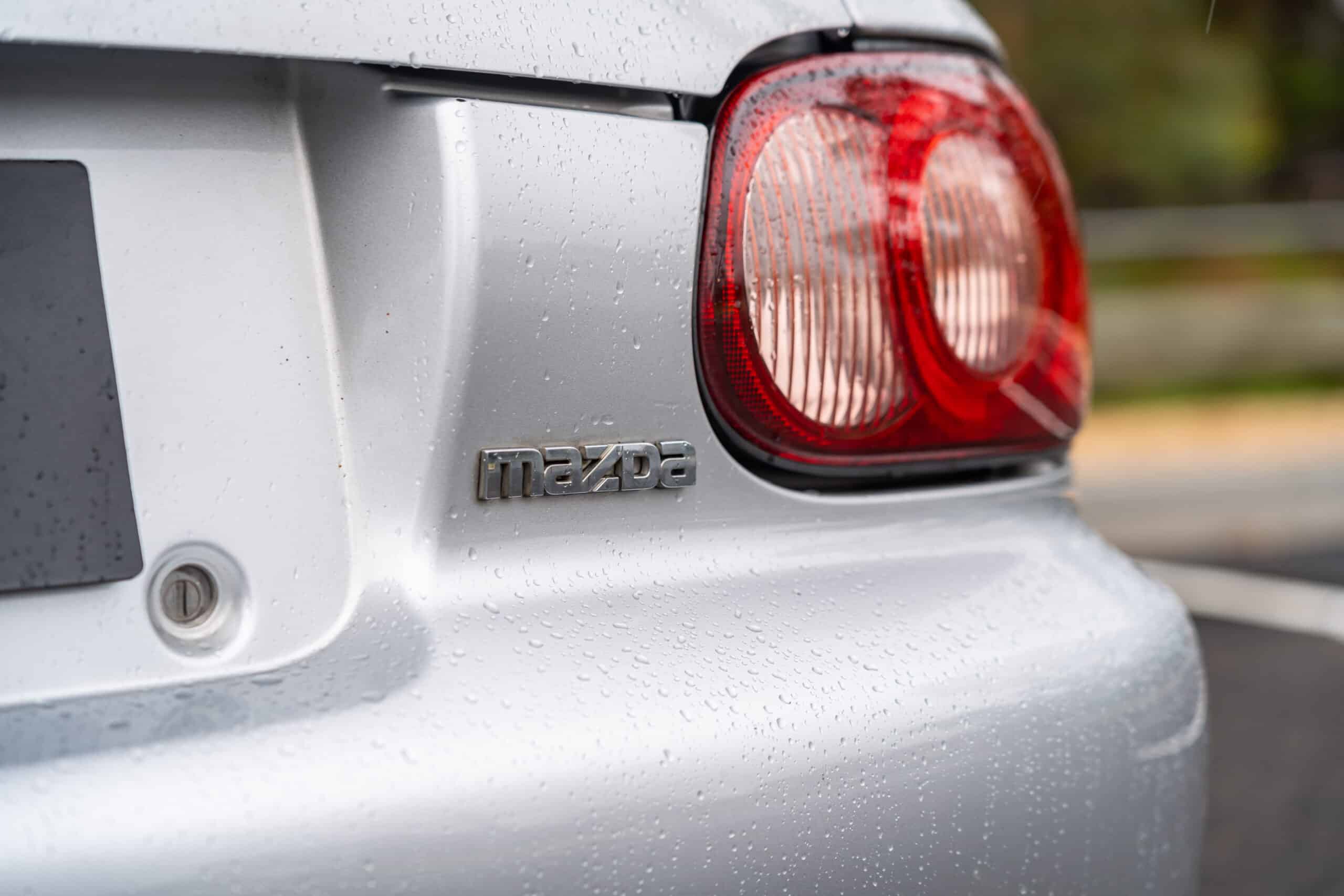
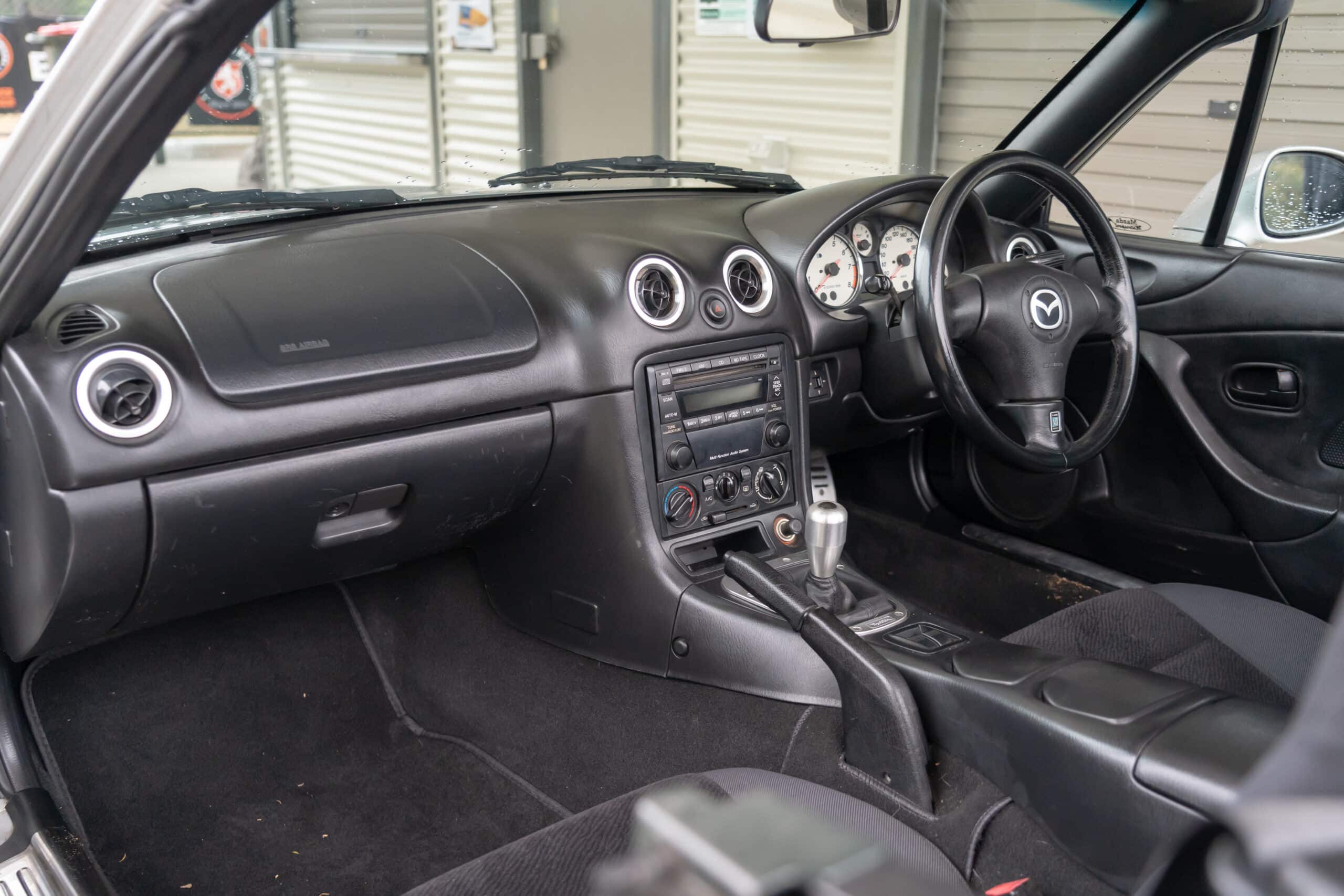
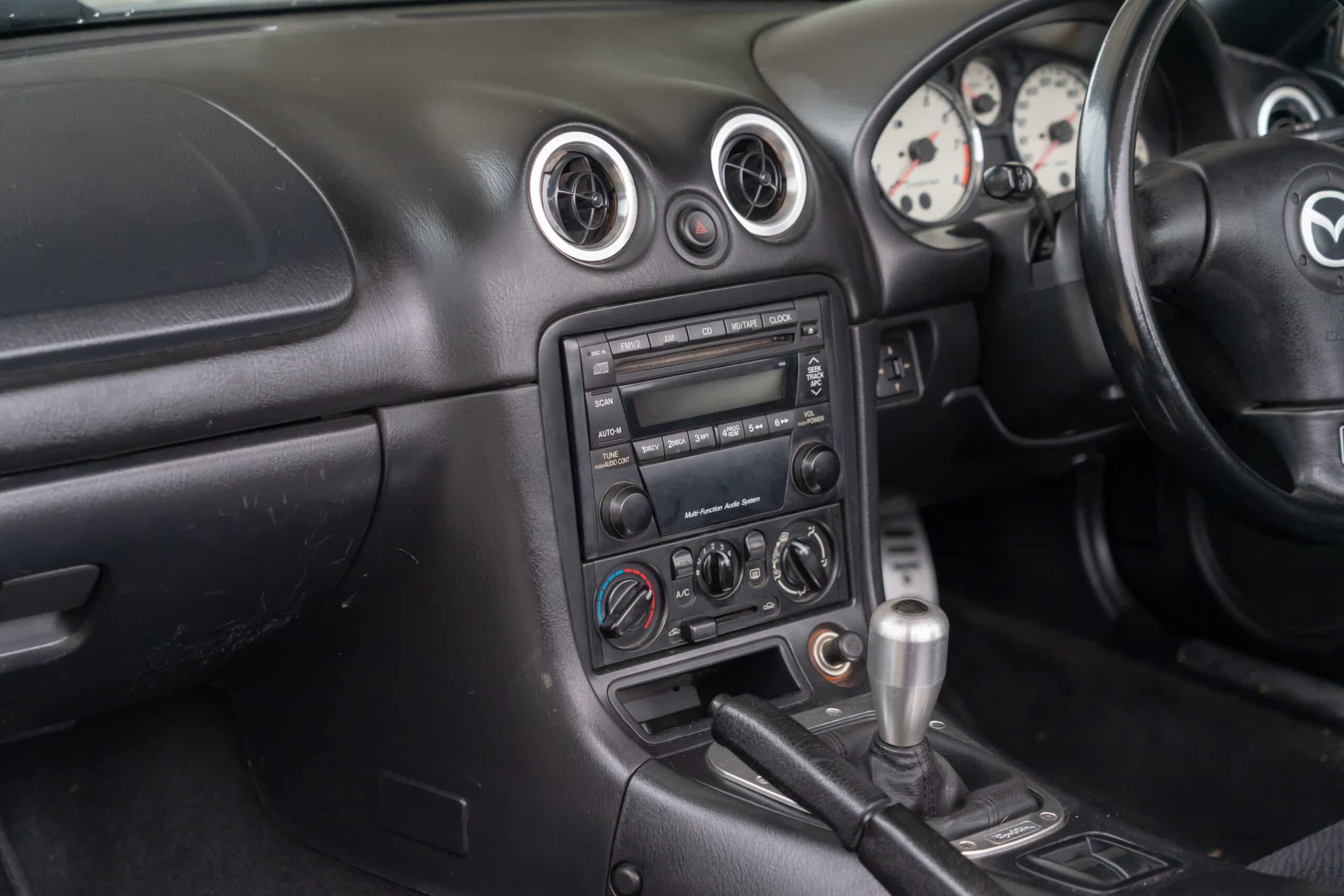
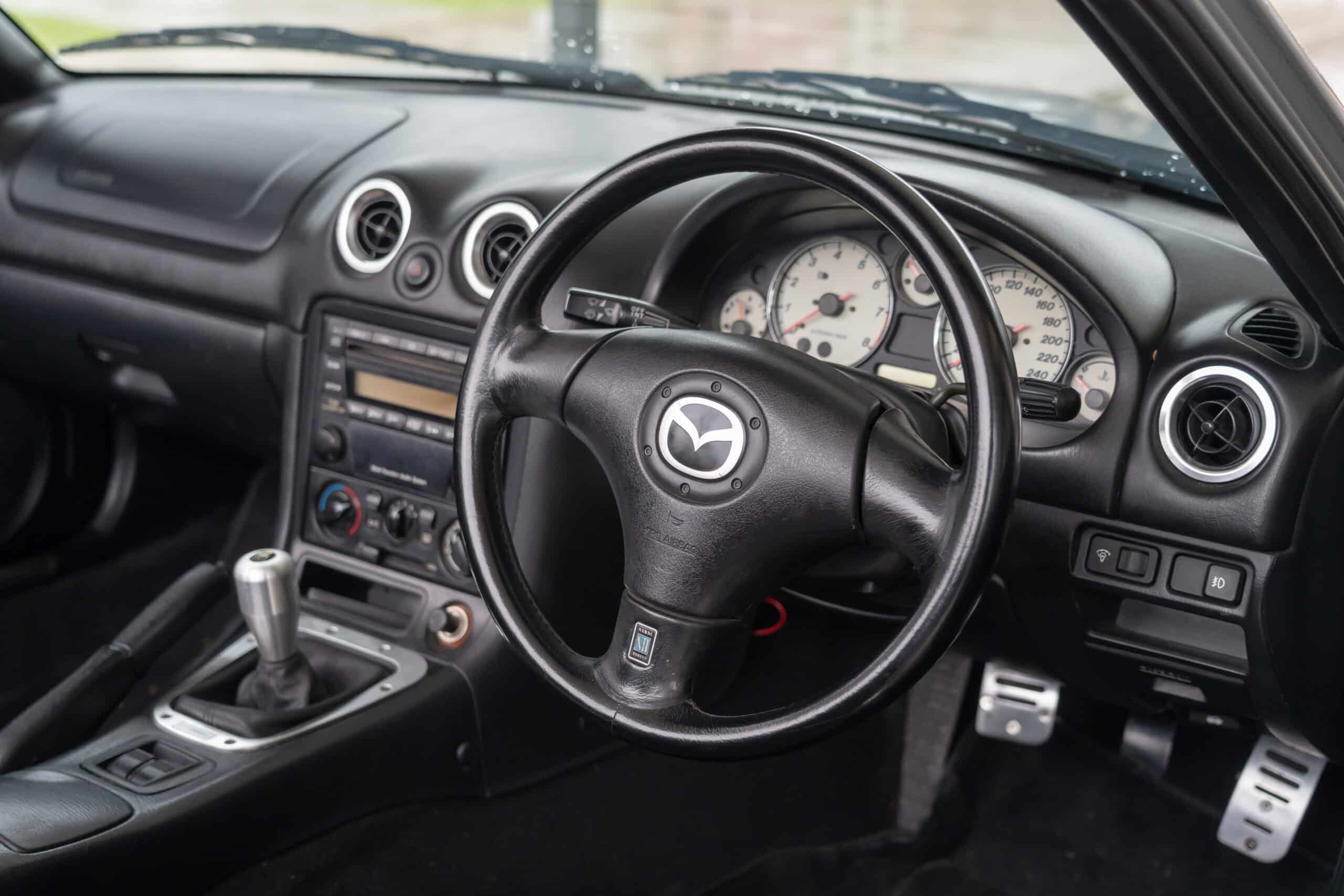
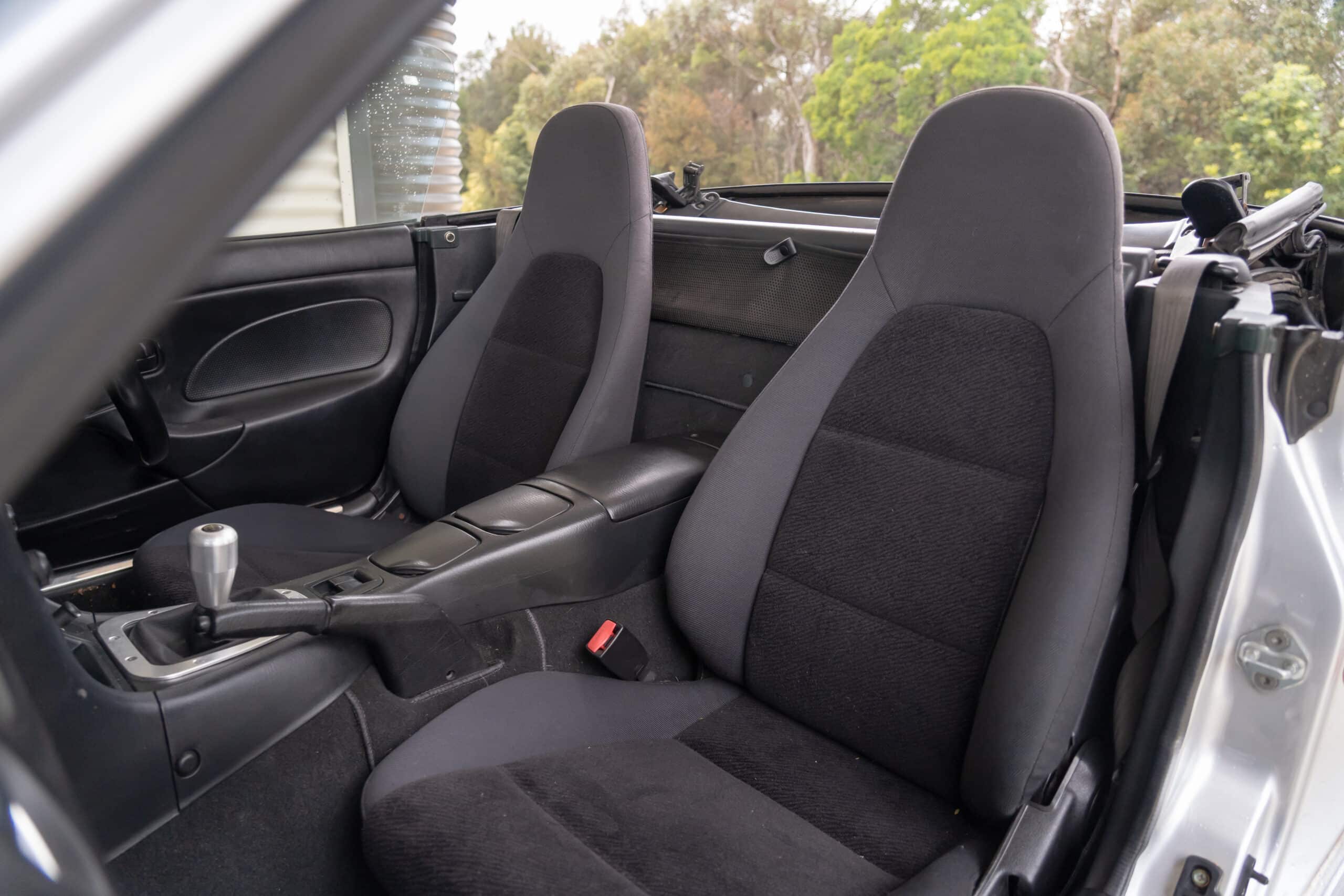
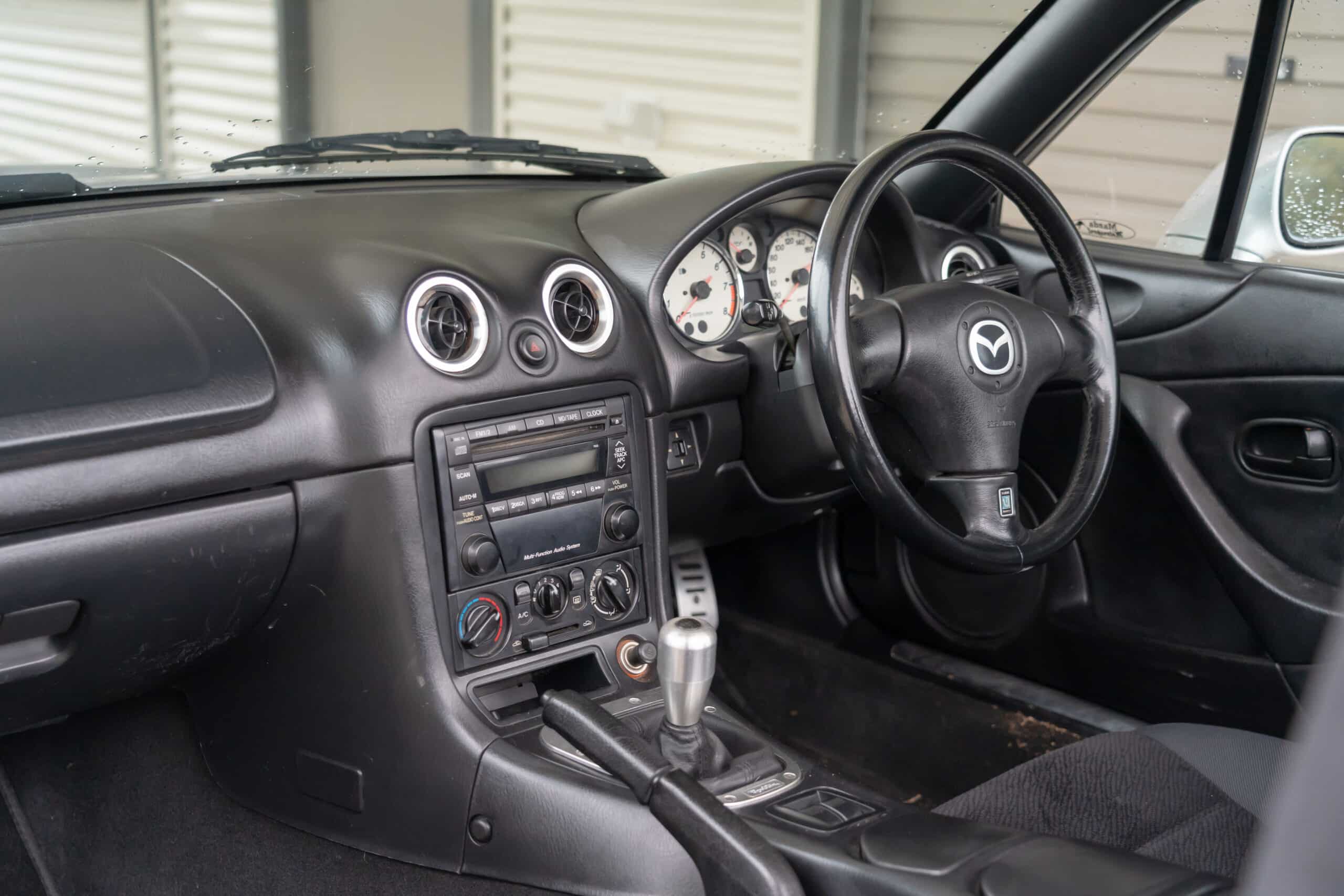
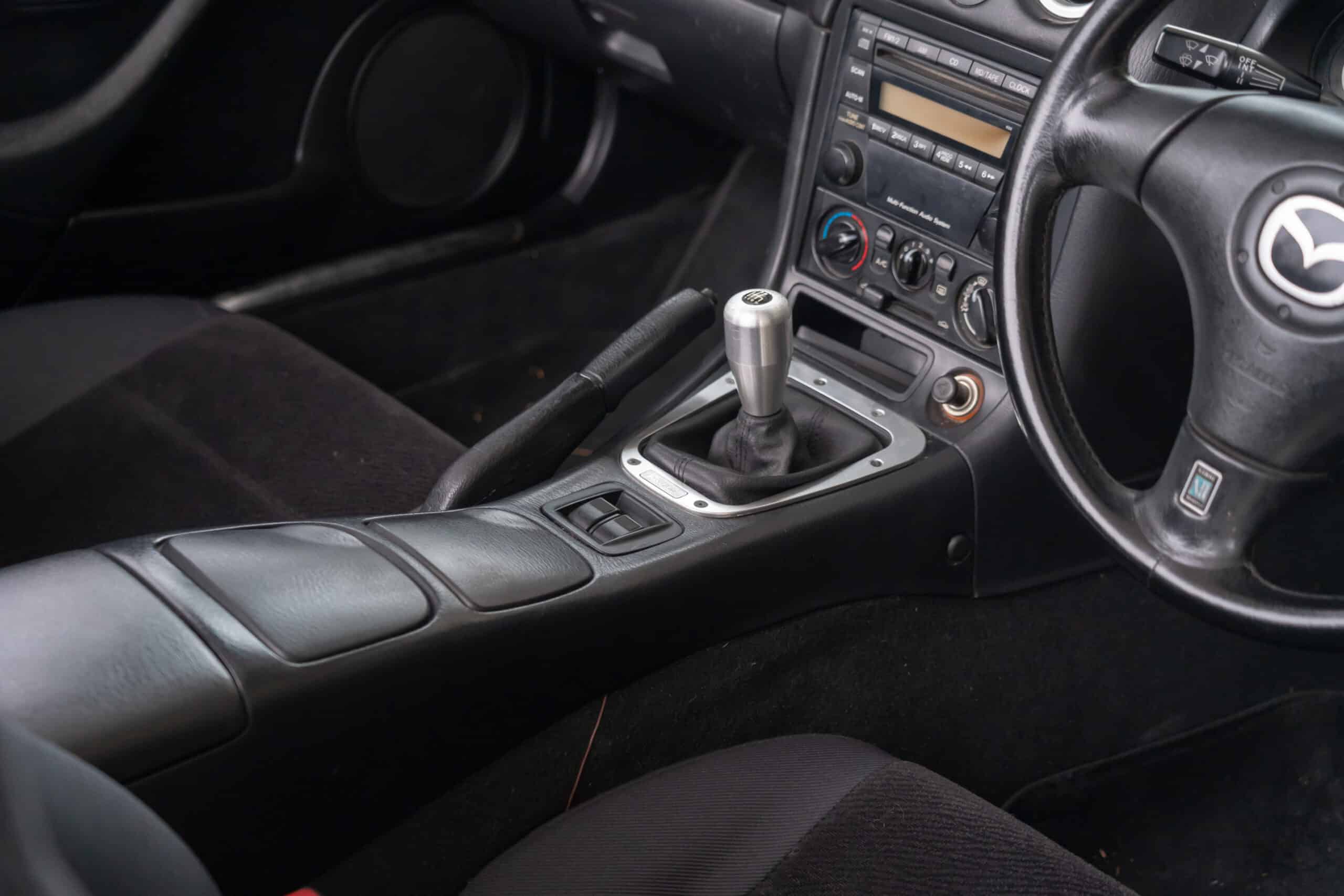
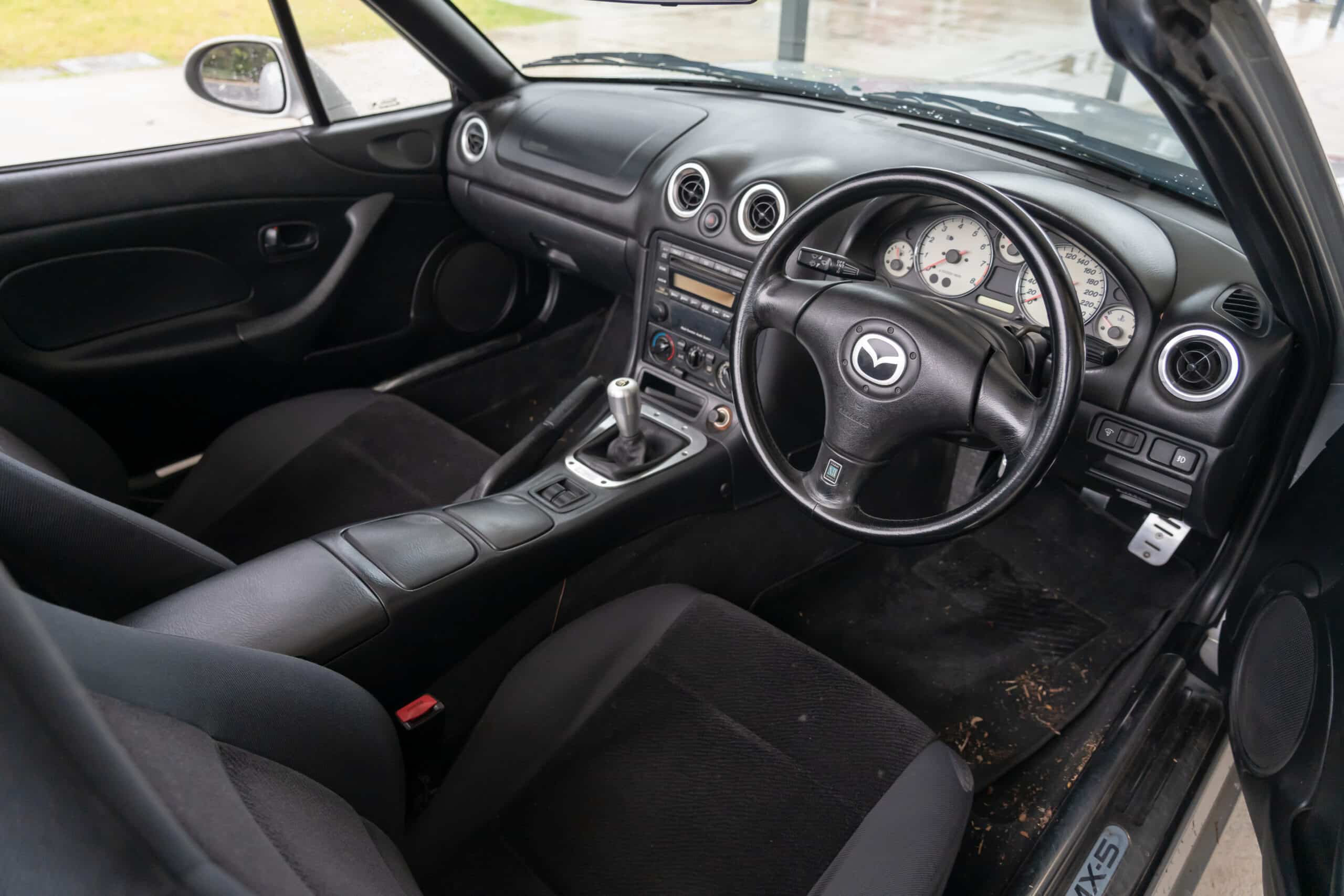
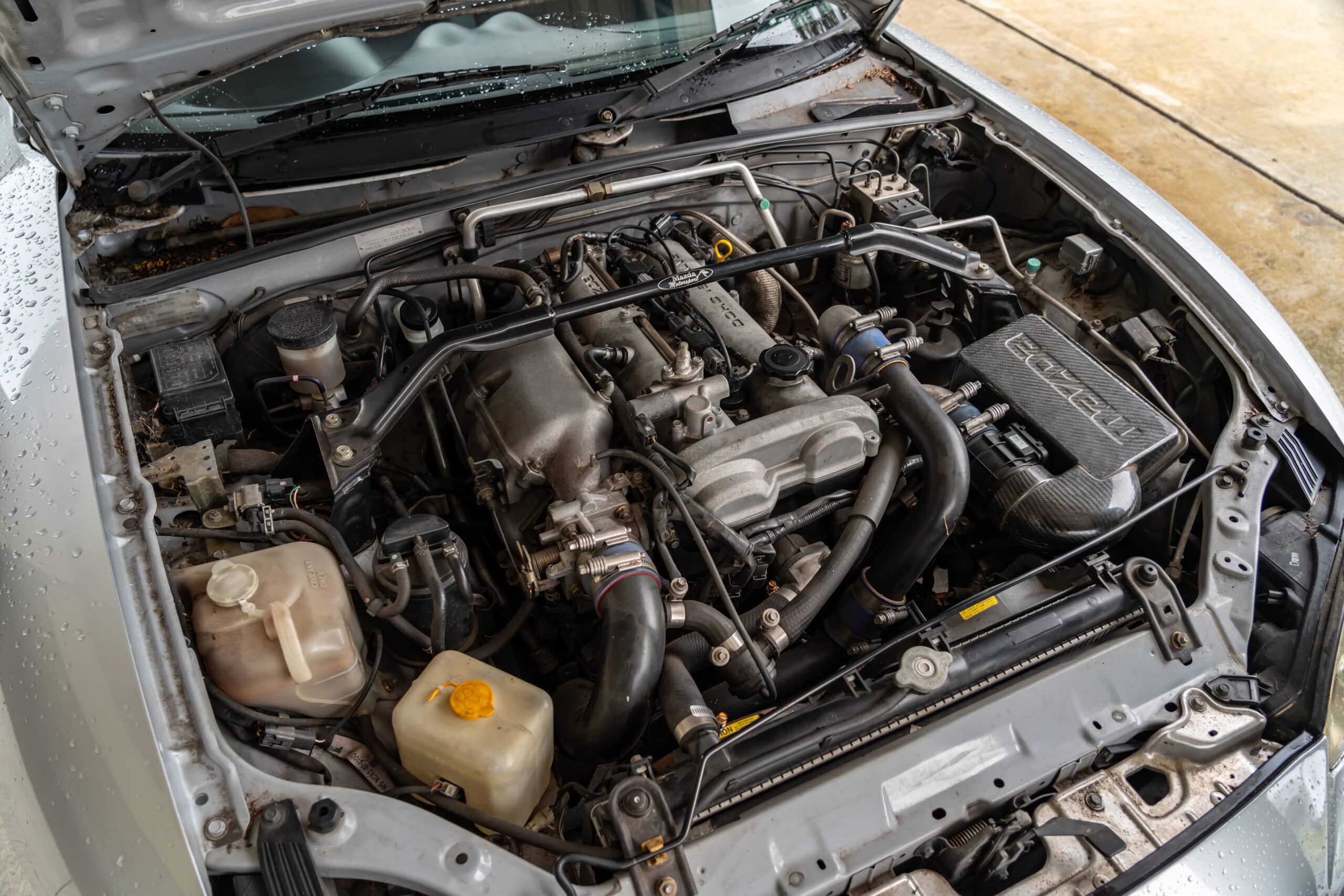



















Exterior:
If you’re here in Australia, good news, in our warmer, mostly rust-free climate, corrosion is usually not something to lose sleep over. It’s not impossible, but it’s rare. However, if you’re shopping in colder parts of the world where salted roads are a thing, you’ll want to get your detective hat on. Inspect absolutely everywhere, sills, wheel arches, and underneath the car in particular.
Regardless of climate, always check around the battery well, windscreen drains, and any drainage points, because blockages here can lead to water pooling, which in turn can lead to rust. And here’s a hot tip, if you see rust hiding behind the front or rear bumpers (something you can often spot from underneath), that could be a red flag for a poorly repaired crash.
Pop the boot and lift the carpet, check for any moisture or corrosion. Rust back here almost always comes down to a leaking roof. And roof leaks happen in two ways. First, blocked drains let water run into the footwell, which can fry the ECU. Second, a failed rain rail, a replaceable but fiddly bit of kit, can send water into the boot and rust out the cover over the fuel tank inside the cabin.
If you find rust in the boot, you’ll want to start looking for a new roof, because sorting that is about the most expensive MX-5 fix there is. Honestly, pulling the whole dash out is easier. If you’re unsure, ask the seller if you can give the roof a good hose-down and check for leaks into the cabin or boot.
Again, most of this is not a big drama in Australia, but if you’re in the UK or North America, be thorough.
Still on boots, some battery retailers manage to get the wrong size battery for these, which means it won’t sit in the bracket properly. That’s bad news, because a loose battery can bounce around and dent the inside of the boot, something owners jokingly call “MX-5 cellulite.” The fix? Get the right battery, and secure it properly.
Also, the boot lid itself feels like it’s made from aluminium foil, it dents from the inside if you overload it, so be gentle when you’re shutting it with gear inside.
Soft tops stored outside and neglected tend to last 10 to 15 years. A replacement can cost anything from around $400 for a very questionable example, all the way to over $3,000 for the good stuff, with plenty in between. When they’re on their way out, you’ll see stitching coming apart and sealing going bad, not great news in the rain.
Roof latches can also be
Exterior:
If you’re here in Australia, good news, in our warmer, mostly rust-free climate, corrosion is usually not something to lose sleep over. It’s not impossible, but it’s rare. However, if you’re shopping in colder parts of the world where salted roads are a thing, you’ll want to get your detective hat on. Inspect absolutely everywhere, sills, wheel arches, and underneath the car in particular.
Regardless of climate, always check around the battery well, windscreen drains, and any drainage points, because blockages here can lead to water pooling, which in turn can lead to rust. And here’s a hot tip, if you see rust hiding behind the front or rear bumpers (something you can often spot from underneath), that could be a red flag for a poorly repaired crash.
Pop the boot and lift the carpet, check for any moisture or corrosion. Rust back here almost always comes down to a leaking roof. And roof leaks happen in two ways. First, blocked drains let water run into the footwell, which can fry the ECU. Second, a failed rain rail, a replaceable but fiddly bit of kit, can send water into the boot and rust out the cover over the fuel tank inside the cabin.
If you find rust in the boot, you’ll want to start looking for a new roof, because sorting that is about the most expensive MX-5 fix there is. Honestly, pulling the whole dash out is easier. If you’re unsure, ask the seller if you can give the roof a good hose-down and check for leaks into the cabin or boot.
Again, most of this is not a big drama in Australia, but if you’re in the UK or North America, be thorough.
Still on boots, some battery retailers manage to get the wrong size battery for these, which means it won’t sit in the bracket properly. That’s bad news, because a loose battery can bounce around and dent the inside of the boot, something owners jokingly call “MX-5 cellulite.” The fix? Get the right battery, and secure it properly.
Also, the boot lid itself feels like it’s made from aluminium foil, it dents from the inside if you overload it, so be gentle when you’re shutting it with gear inside.
Soft tops stored outside and neglected tend to last 10 to 15 years. A replacement can cost anything from around $400 for a very questionable example, all the way to over $3,000 for the good stuff, with plenty in between. When they’re on their way out, you’ll see stitching coming apart and sealing going bad, not great news in the rain.
Roof latches can also be worn by now, particularly the security latch. The little nub on these wears away, and then the roof can pop open by accident. Thankfully, they’re easy to fix or replace, brand-new ones are about $150–$200, or you can just replace the worn latch for a lot less.
Hardtop latches are pricier. People tend to overtighten them, bending the latch and leaving it permanently loose, and at that point, you’ll be buying replacements.
Being a 20-plus-year-old car, check every rubber seal and bit of plastic trim. They usually hold up well, but years of sun and heat can take their toll.
Owners reckon the paint quality is better than the earlier NA model and the newer ND, but if you see mismatched or messy paint, there’s a fair chance it’s hiding accident repairs.
There’s not much in the way of exterior electronics to worry about, but the powered antenna can fail to rise to the occasion, it happens, or you can convert it to a static one if size isn’t a priority for you. The blinker relay can be temperamental, too. Window motors can slow down with age, often it’s just the bushes disintegrating rather than the motor dying, but replacements for these are getting pricey.
And while we’re talking pricey, parts for these are getting rarer and more expensive as time goes on. For example, if you somehow find a factory carbon-fibre airbox for an SP, expect to fork out over $3,000. And that’s if you can even find one. Not that it matters for most buyers, the SP is an ultra-rare, very special turbo model you’re unlikely to come across.
Interior:
Inside, the NB is surprisingly good news. Owners praise just how tough these cabins are. The plastics don’t go brittle like in the NA, and the fit and finish feels like a generation-wide upgrade. That’s not to say everything is perfect.
Some owners report speedos and tachos dropping signal intermittently, check the owner forums for fixes.
Seat bolsters, especially the outer ones, might be looking a bit second-hand by now. That’s just age, wear, and UV damage doing its thing.
If you’re looking at a Series 1, you might find the centre console latch no longer latches and the cup holder doors flopping about. Easy fix, just swap in Series 2 parts.
And like most things on an NB, a phillips head screwdriver, an M10 socket, a bit of DIY enthusiasm, and some common sense will sort a surprising number of problems.
For SPs or NBs with certain interior options, there’s one potential headache: missing gearknobs and gearstick surrounds. Some owners remove the metal knob to stop branding their hand in summer, and then somewhere along the way, the parts go missing. They’re no longer made, and finding them used is almost impossible.
As for the factory “infotainment system”, if we can call it that, and speakers, they were bad when new and are truly awful now. Even if the head unit’s been replaced, chances are it won’t have Apple CarPlay, Android Auto, or anything modern. The good news is there’s a huge range of aftermarket solutions, including some that let you keep the original head unit in place for that factory look, but still connect your phone to the speakers.
Mechanically:
At this age, the cooling system will almost certainly need some love. The coolant expansion tank can get crusty and leaky, not a big deal, as it’s not pressurised and you don’t need to waste money on an aftermarket aluminium one. The plastic OE tank is fine.
Oil leaks are common, valve cover, rear main, and front crank seals. A leaking front crank seal can kill your timing belt. Speaking of which, the belt should be done every 100,000km or seven years. If it snaps, it won’t grenade the engine, but it’s still a job you want done on time.
Ignition coils can fail, nothing scandalous, they’re just getting on in years.
Unlike the NA, the NB uses solid shim-style valve clearances instead of hydraulic lifters, so you’re less likely to have issues there.
Turbo models:
These have their own quirks. The turbo oil feed can block, starving the turbo of oil. The exhaust can leak at the turbo/manifold join, which usually means replacing the manifold. Then there’s the crankshaft thrust bearing issue, an internal fault that means pulling the engine apart to fix. It’s made worse by heavy-duty clutches, which require more pedal pressure and load the thrust bearing more, increasing the risk of failure.
Transmissions:
The gearboxes aren’t the toughest out there, and worn synchros can lead to crunchy shifts. The SP’s extra torque means more wear. Changing the gearbox oil every 40,000km helps. Clutch master and slave cylinders can also leak.
Mechanically Overall:
The biggest risk is not a single design flaw, but years of neglect, penny-pinching on maintenance, and owners thrashing them with zero mechanical sympathy. Yes, NBs have a strong reputation for reliability, and they’re hugely popular in motorsport circles, but don’t skip a pre-purchase inspection. And do your homework on owner groups and forums before buying, you’ll thank yourself later.
Exterior:
If you’re here in Australia, good news, in our warmer, mostly rust-free climate, corrosion is usually not something to lose sleep over. It’s not impossible, but it’s rare. However, if you’re shopping in colder parts of the world where salted roads are a thing, you’ll want to get your detective hat on. Inspect absolutely everywhere, sills, wheel arches, and underneath the car in particular.
Regardless of climate, always check around the battery well, windscreen drains, and any drainage points, because blockages here can lead to water pooling, which in turn can lead to rust. And here’s a hot tip, if you see rust hiding behind the front or rear bumpers (something you can often spot from underneath), that could be a red flag for a poorly repaired crash.
Pop the boot and lift the carpet, check for any moisture or corrosion. Rust back here almost always comes down to a leaking roof. And roof leaks happen in two ways. First, blocked drains let water run into the footwell, which can fry the ECU. Second, a failed rain rail, a replaceable but fiddly bit of kit, can send water into the boot and rust out the cover over the fuel tank inside the cabin.
If you find rust in the boot, you’ll want to start looking for a new roof, because sorting that is about the most expensive MX-5 fix there is. Honestly, pulling the whole dash out is easier. If you’re unsure, ask the seller if you can give the roof a good hose-down and check for leaks into the cabin or boot.
Again, most of this is not a big drama in Australia, but if you’re in the UK or North America, be thorough.
Still on boots, some battery retailers manage to get the wrong size battery for these, which means it won’t sit in the bracket properly. That’s bad news, because a loose battery can bounce around and dent the inside of the boot, something owners jokingly call “MX-5 cellulite.” The fix? Get the right battery, and secure it properly.
Also, the boot lid itself feels like it’s made from aluminium foil, it dents from the inside if you overload it, so be gentle when you’re shutting it with gear inside.
Soft tops stored outside and neglected tend to last 10 to 15 years. A replacement can cost anything from around $400 for a very questionable example, all the way to over $3,000 for the good stuff, with plenty in between. When they’re on their way out, you’ll see stitching coming apart and sealing going bad, not great news in the rain.
Roof latches can also be worn by now, particularly the security latch. The little nub on these wears away, and then the roof can pop open by accident. Thankfully, they’re easy to fix or replace, brand-new ones are about $150–$200, or you can just replace the worn latch for a lot less.
Hardtop latches are pricier. People tend to overtighten them, bending the latch and leaving it permanently loose, and at that point, you’ll be buying replacements.
Being a 20-plus-year-old car, check every rubber seal and bit of plastic trim. They usually hold up well, but years of sun and heat can take their toll.
Owners reckon the paint quality is better than the earlier NA model and the newer ND, but if you see mismatched or messy paint, there’s a fair chance it’s hiding accident repairs.
There’s not much in the way of exterior electronics to worry about, but the powered antenna can fail to rise to the occasion, it happens, or you can convert it to a static one if size isn’t a priority for you. The blinker relay can be temperamental, too. Window motors can slow down with age, often it’s just the bushes disintegrating rather than the motor dying, but replacements for these are getting pricey.
And while we’re talking pricey, parts for these are getting rarer and more expensive as time goes on. For example, if you somehow find a factory carbon-fibre airbox for an SP, expect to fork out over $3,000. And that’s if you can even find one. Not that it matters for most buyers, the SP is an ultra-rare, very special turbo model you’re unlikely to come across.
Interior:
Inside, the NB is surprisingly good news. Owners praise just how tough these cabins are. The plastics don’t go brittle like in the NA, and the fit and finish feels like a generation-wide upgrade. That’s not to say everything is perfect.
Some owners report speedos and tachos dropping signal intermittently, check the owner forums for fixes.
Seat bolsters, especially the outer ones, might be looking a bit second-hand by now. That’s just age, wear, and UV damage doing its thing.
If you’re looking at a Series 1, you might find the centre console latch no longer latches and the cup holder doors flopping about. Easy fix, just swap in Series 2 parts.
And like most things on an NB, a phillips head screwdriver, an M10 socket, a bit of DIY enthusiasm, and some common sense will sort a surprising number of problems.
For SPs or NBs with certain interior options, there’s one potential headache: missing gearknobs and gearstick surrounds. Some owners remove the metal knob to stop branding their hand in summer, and then somewhere along the way, the parts go missing. They’re no longer made, and finding them used is almost impossible.
As for the factory “infotainment system”, if we can call it that, and speakers, they were bad when new and are truly awful now. Even if the head unit’s been replaced, chances are it won’t have Apple CarPlay, Android Auto, or anything modern. The good news is there’s a huge range of aftermarket solutions, including some that let you keep the original head unit in place for that factory look, but still connect your phone to the speakers.
Mechanically:
At this age, the cooling system will almost certainly need some love. The coolant expansion tank can get crusty and leaky, not a big deal, as it’s not pressurised and you don’t need to waste money on an aftermarket aluminium one. The plastic OE tank is fine.
Oil leaks are common, valve cover, rear main, and front crank seals. A leaking front crank seal can kill your timing belt. Speaking of which, the belt should be done every 100,000km or seven years. If it snaps, it won’t grenade the engine, but it’s still a job you want done on time.
Ignition coils can fail, nothing scandalous, they’re just getting on in years.
Unlike the NA, the NB uses solid shim-style valve clearances instead of hydraulic lifters, so you’re less likely to have issues there.
Turbo models:
These have their own quirks. The turbo oil feed can block, starving the turbo of oil. The exhaust can leak at the turbo/manifold join, which usually means replacing the manifold. Then there’s the crankshaft thrust bearing issue, an internal fault that means pulling the engine apart to fix. It’s made worse by heavy-duty clutches, which require more pedal pressure and load the thrust bearing more, increasing the risk of failure.
Transmissions:
The gearboxes aren’t the toughest out there, and worn synchros can lead to crunchy shifts. The SP’s extra torque means more wear. Changing the gearbox oil every 40,000km helps. Clutch master and slave cylinders can also leak.
Mechanically Overall:
The biggest risk is not a single design flaw, but years of neglect, penny-pinching on maintenance, and owners thrashing them with zero mechanical sympathy. Yes, NBs have a strong reputation for reliability, and they’re hugely popular in motorsport circles, but don’t skip a pre-purchase inspection. And do your homework on owner groups and forums before buying, you’ll thank yourself later.
Should you buy one? Of course you should. Just make sure it’s the right one.
Unless you’re specifically after a project, steer well clear of any that have been given the full “ricer” treatment. Not only is there a high chance they’ve been driven with all the mechanical sympathy of a sledgehammer, but it’s almost certain that every possible financial corner has been cut to keep them running. And let’s be honest, they usually look terrible and people will judge you for it.
Now, even among good examples that pass a pre-purchase inspection, which NB is actually the one to get?
Think of the Series 1 pre-update cars as essentially improved NA MX-5s that just happen to cost less. They’ve got that same soulful, honest charm of the original pop-up headlight NA, but wrapped in the cleaner NB body. For the money, they’re arguably the best-value NA you’ll find, they’re just wearing a more modern suit.
That said, the Series 2, 3, and 4 are much easier to live with day-to-day. You don’t lose any of that MX-5 magic, but you get a few modern touches that make them more comfortable and usable. These later series are the sweet spot in the NB range.
Then there’s the SP. The SP isn’t just another NB with a turbo bolted on, it’s something altogether more serious. The difference between an SP and any other NB is like meeting identical twins, but you’re pretty sure one of
Should you buy one? Of course you should. Just make sure it’s the right one.
Unless you’re specifically after a project, steer well clear of any that have been given the full “ricer” treatment. Not only is there a high chance they’ve been driven with all the mechanical sympathy of a sledgehammer, but it’s almost certain that every possible financial corner has been cut to keep them running. And let’s be honest, they usually look terrible and people will judge you for it.
Now, even among good examples that pass a pre-purchase inspection, which NB is actually the one to get?
Think of the Series 1 pre-update cars as essentially improved NA MX-5s that just happen to cost less. They’ve got that same soulful, honest charm of the original pop-up headlight NA, but wrapped in the cleaner NB body. For the money, they’re arguably the best-value NA you’ll find, they’re just wearing a more modern suit.
That said, the Series 2, 3, and 4 are much easier to live with day-to-day. You don’t lose any of that MX-5 magic, but you get a few modern touches that make them more comfortable and usable. These later series are the sweet spot in the NB range.
Then there’s the SP. The SP isn’t just another NB with a turbo bolted on, it’s something altogether more serious. The difference between an SP and any other NB is like meeting identical twins, but you’re pretty sure one of them might be a psychopath. It’s sharper, more intense, and in the right hands, an absolute weapon.
Overall, the NB MX-5 is the classic Casio G-Shock of the car world, tough, reliable, and so iconic that even people who can afford cars worth ten times as much have nothing but respect for it. In fact, a lot of them probably have one tucked away in their collection.
And even if, for whatever reason, you can’t buy one, at least go for a drive in one. Everyone should experience the joy of an NB MX-5 at least once in their lives.
Should you buy one? Of course you should. Just make sure it’s the right one.
Unless you’re specifically after a project, steer well clear of any that have been given the full “ricer” treatment. Not only is there a high chance they’ve been driven with all the mechanical sympathy of a sledgehammer, but it’s almost certain that every possible financial corner has been cut to keep them running. And let’s be honest, they usually look terrible and people will judge you for it.
Now, even among good examples that pass a pre-purchase inspection, which NB is actually the one to get?
Think of the Series 1 pre-update cars as essentially improved NA MX-5s that just happen to cost less. They’ve got that same soulful, honest charm of the original pop-up headlight NA, but wrapped in the cleaner NB body. For the money, they’re arguably the best-value NA you’ll find, they’re just wearing a more modern suit.
That said, the Series 2, 3, and 4 are much easier to live with day-to-day. You don’t lose any of that MX-5 magic, but you get a few modern touches that make them more comfortable and usable. These later series are the sweet spot in the NB range.
Then there’s the SP. The SP isn’t just another NB with a turbo bolted on, it’s something altogether more serious. The difference between an SP and any other NB is like meeting identical twins, but you’re pretty sure one of them might be a psychopath. It’s sharper, more intense, and in the right hands, an absolute weapon.
Overall, the NB MX-5 is the classic Casio G-Shock of the car world, tough, reliable, and so iconic that even people who can afford cars worth ten times as much have nothing but respect for it. In fact, a lot of them probably have one tucked away in their collection.
And even if, for whatever reason, you can’t buy one, at least go for a drive in one. Everyone should experience the joy of an NB MX-5 at least once in their lives.
Have ultimate peace of mind when buying a used car by purchasing an official PPSR report.
Please note that pricing information is subject to fluctuations in the automotive market.
Information correct as of August 10, 2025.
The advice provided on this website is general advice only. It has been prepared without taking into account your objectives, financial situation or needs. Before acting on this advice, you should consider the appropriateness of the advice, having regard to your own objectives, financial situation and needs.
Read our full terms and conditions here.
You are the best, the content in your videos is so helpful, delivered in a great way. Please keep going as for sure you are unique in every way. All the best from Guatemala
L. G. - YouTube
You guys have truly found something wonderful… Loved this channel ever since from the beginning… Will support you guys as long as you guys keep making these wonderful car reviews…
Calvin - YouTube
This is probably the best channel I have ever seen when reviewing vehicles. New or old. The honesty is so appreciated. I’ve been a mechanic for 20 years and I find it very informative when looking for a vehicle for my daughter. Keep up the awesome work.
Jason T. - YouTube
© 2025 ReDriven All Rights Reserved